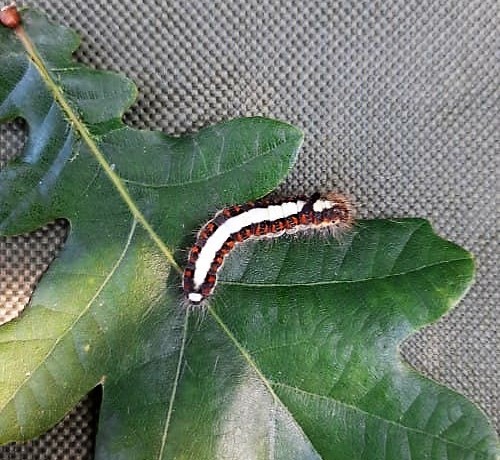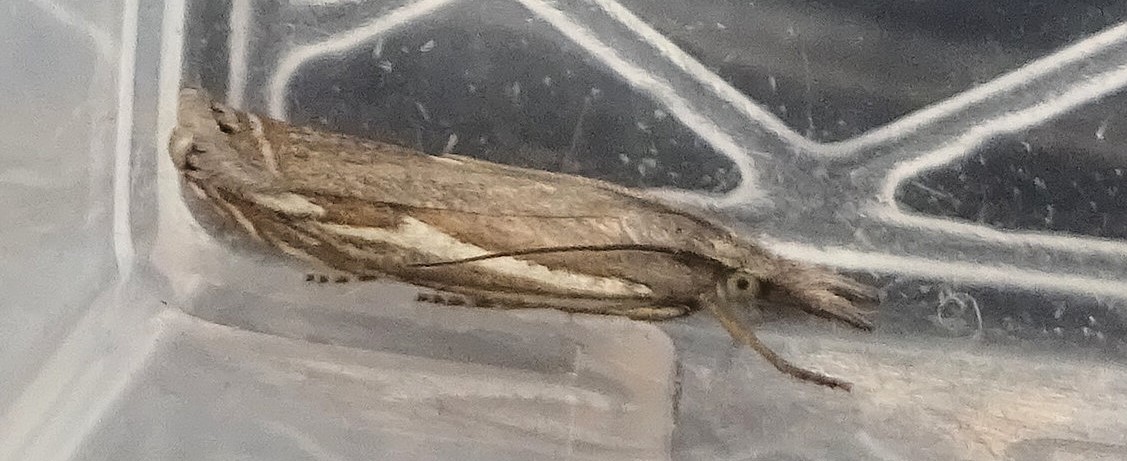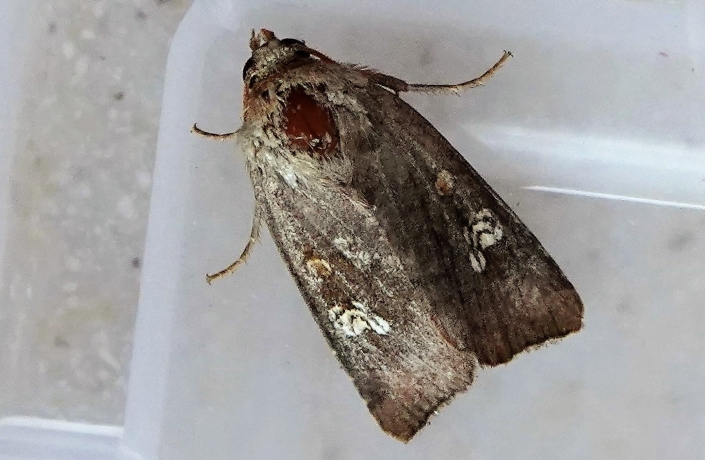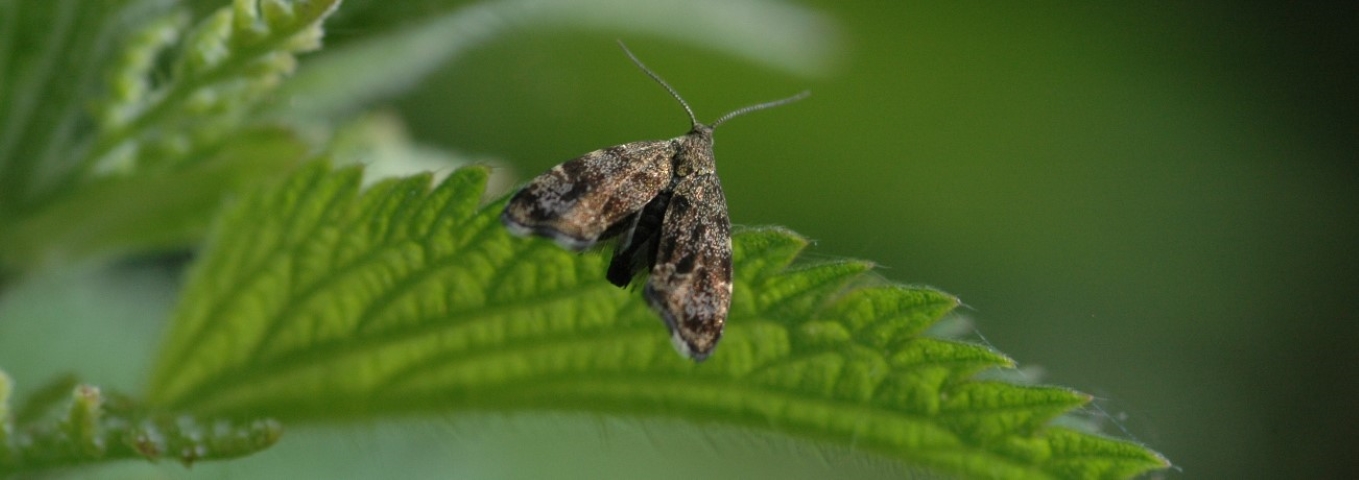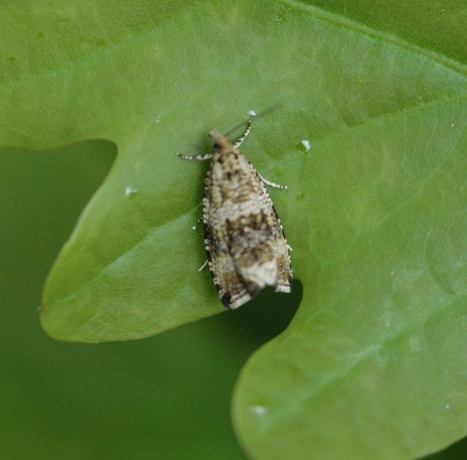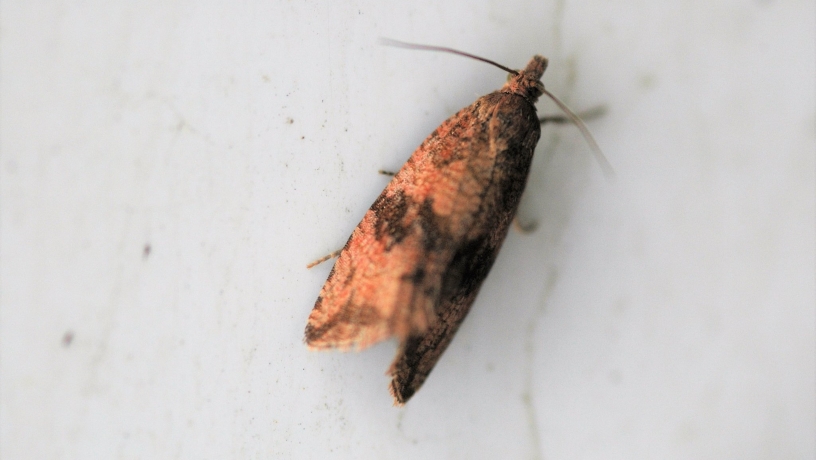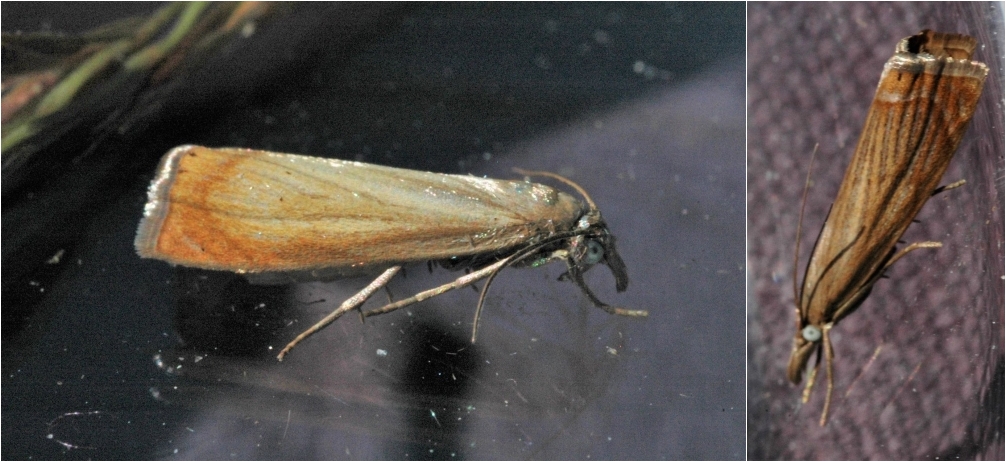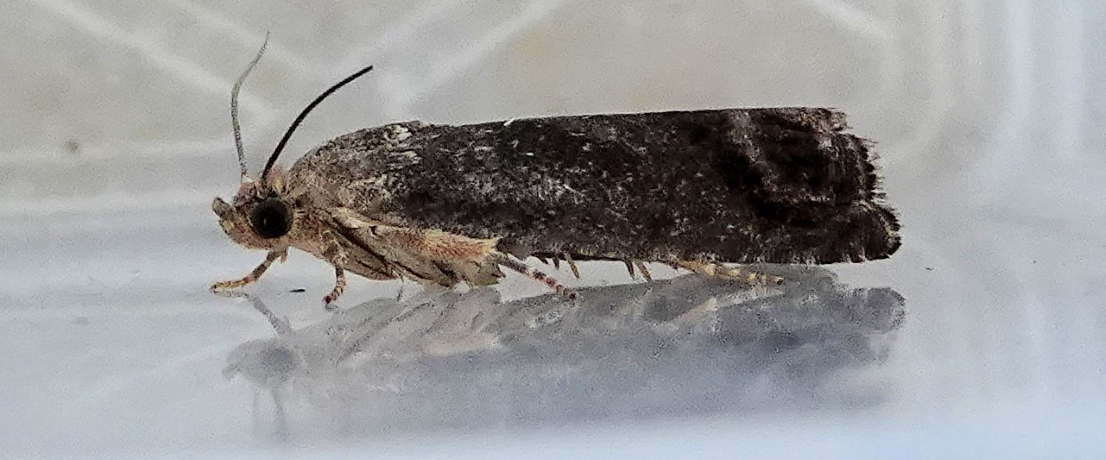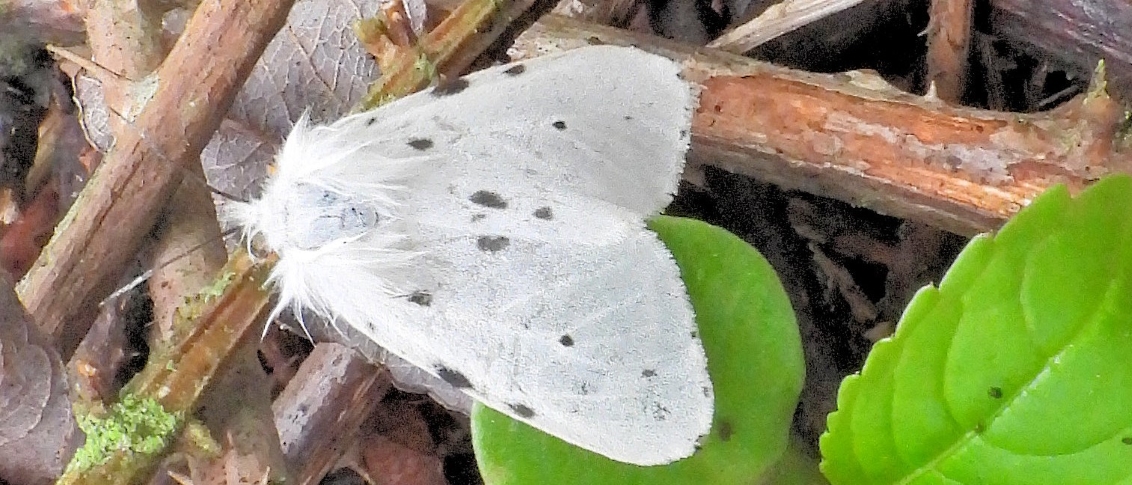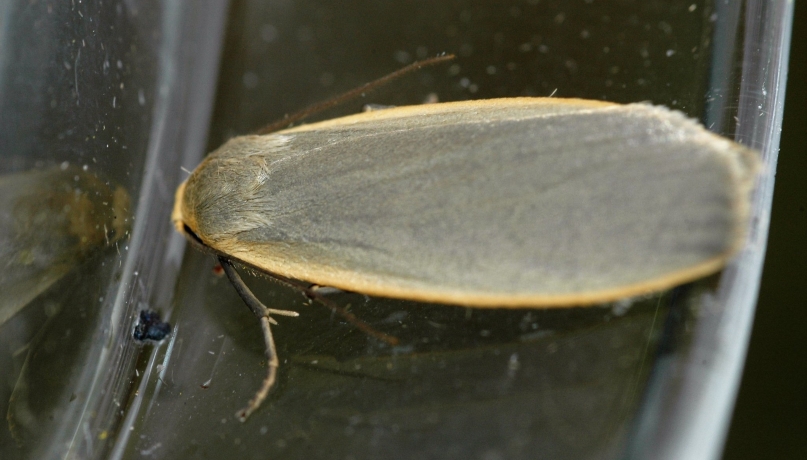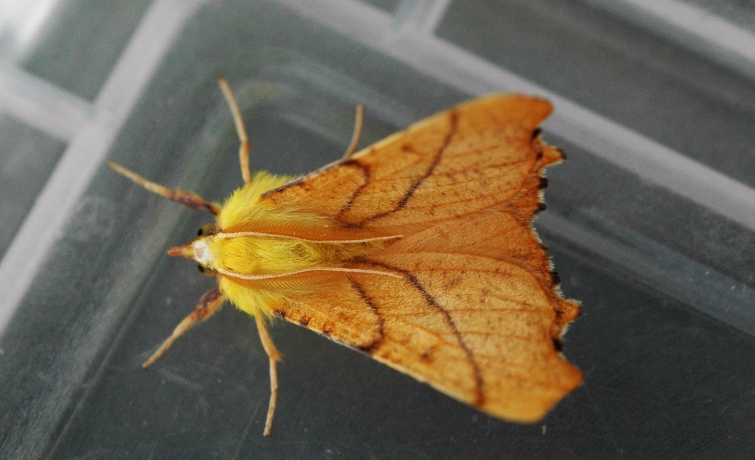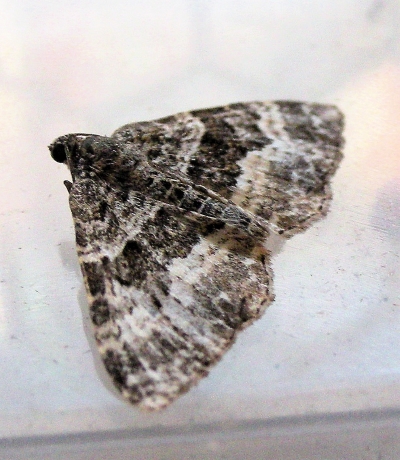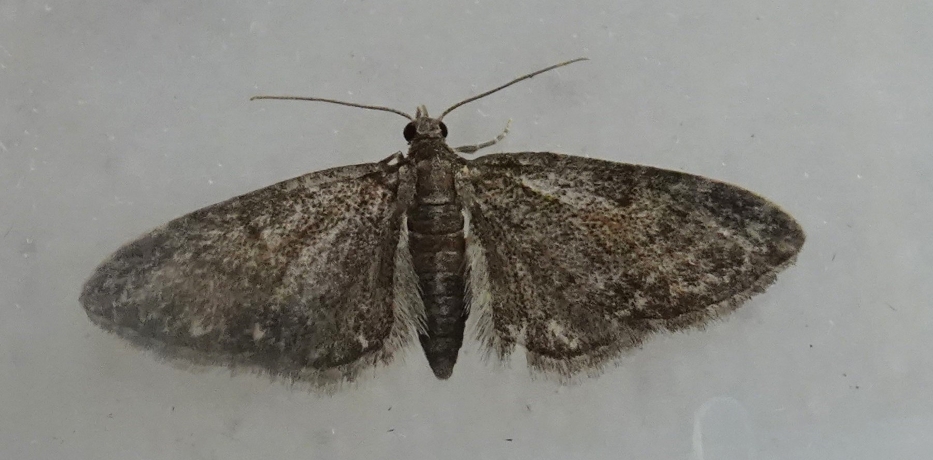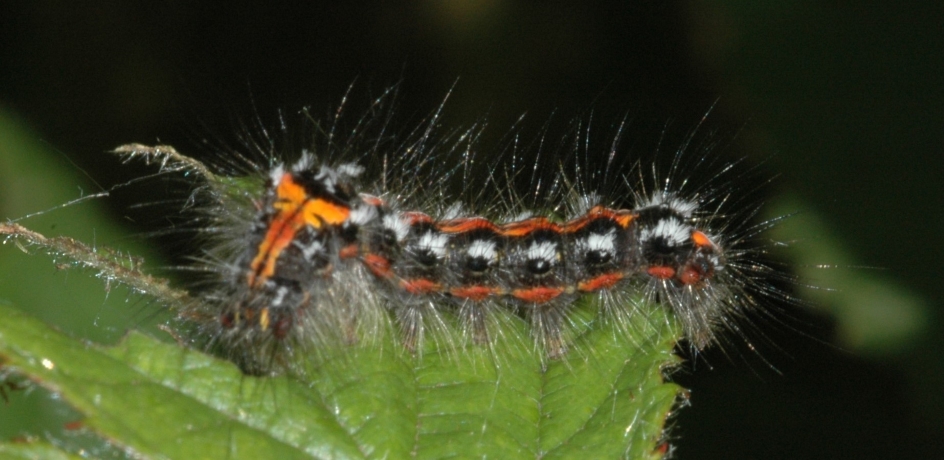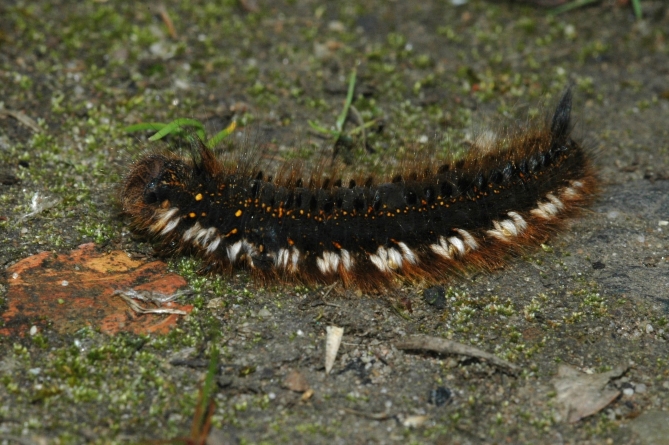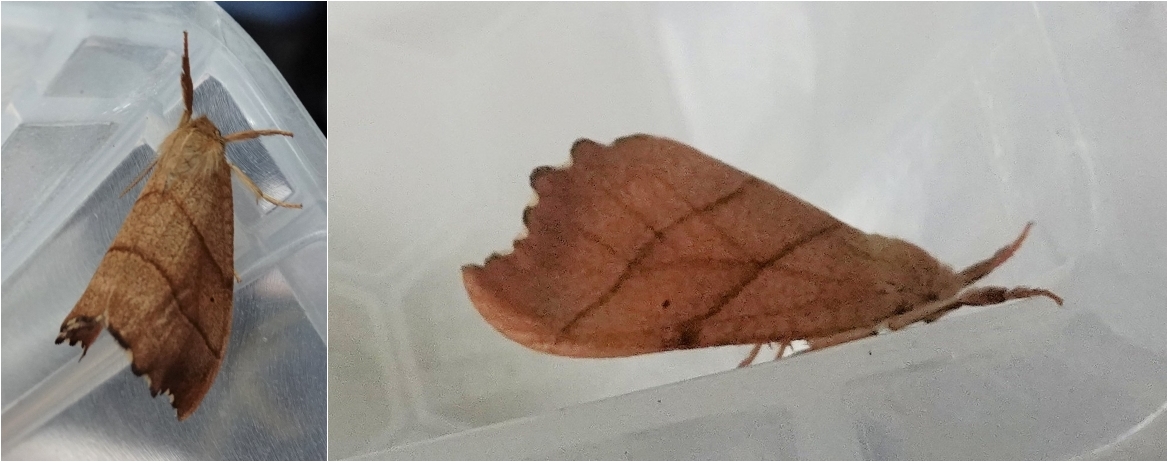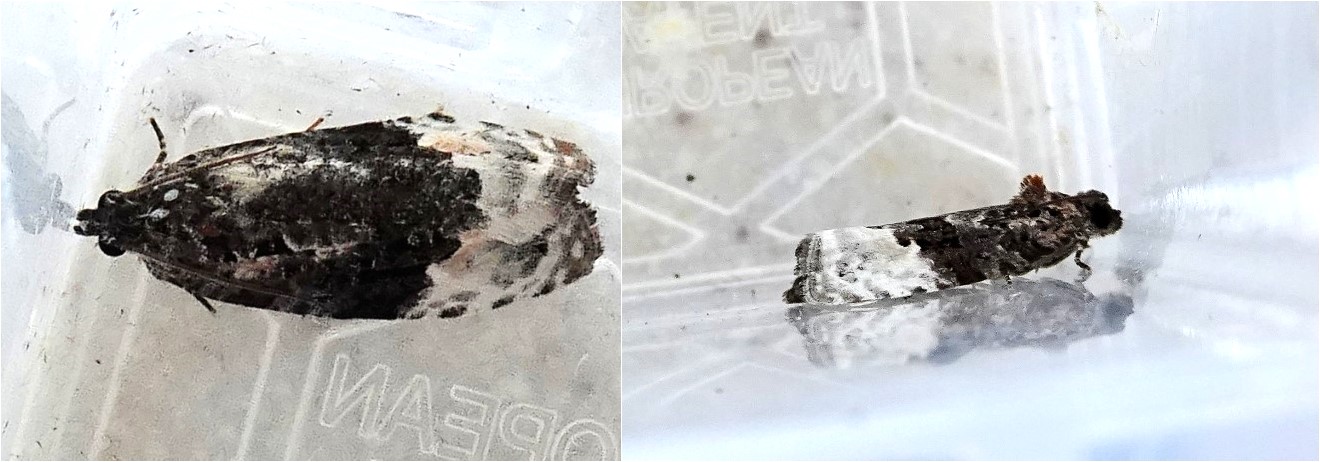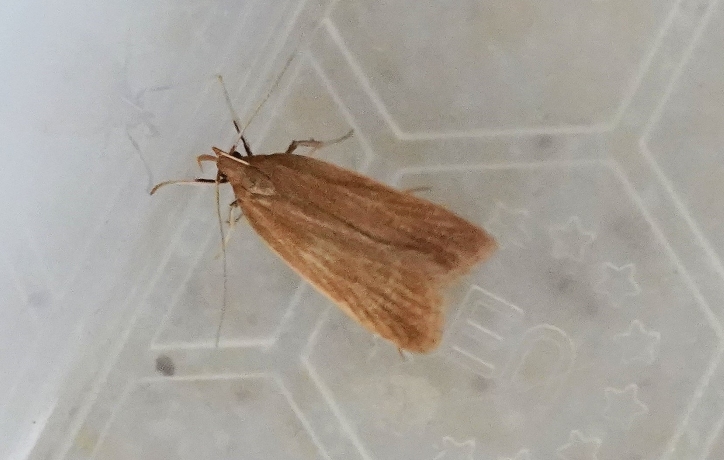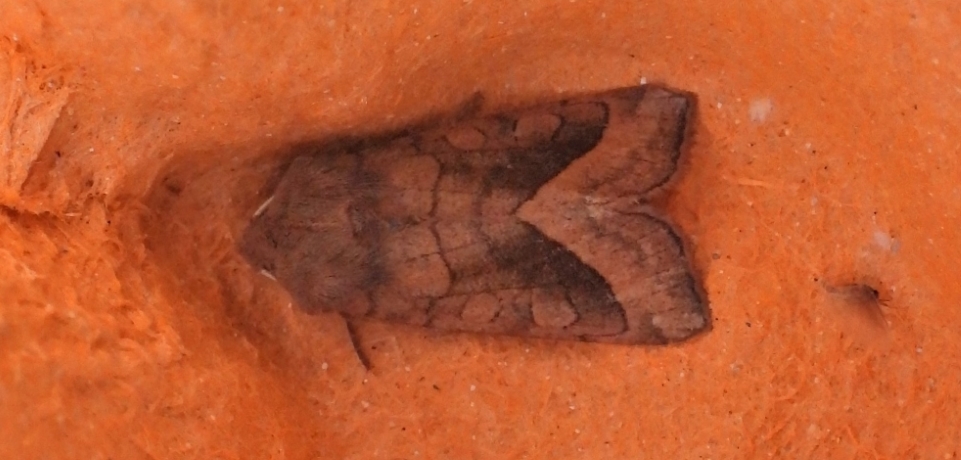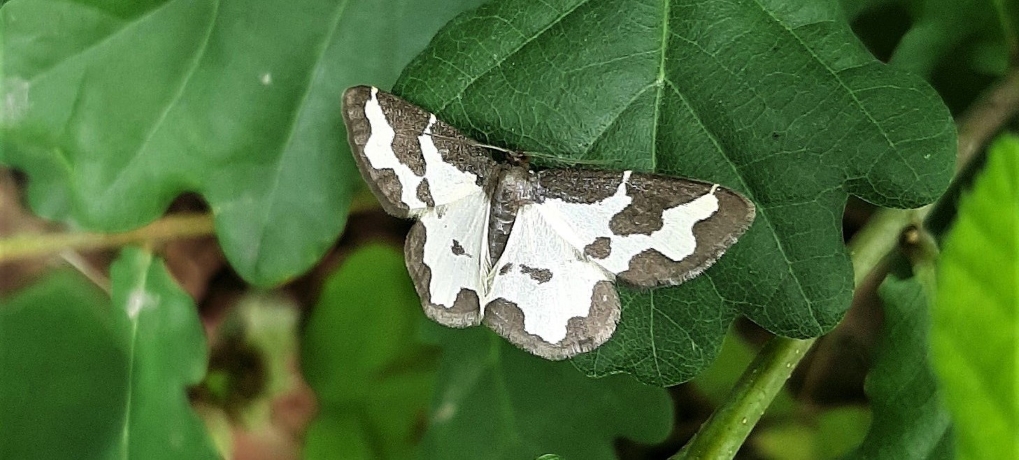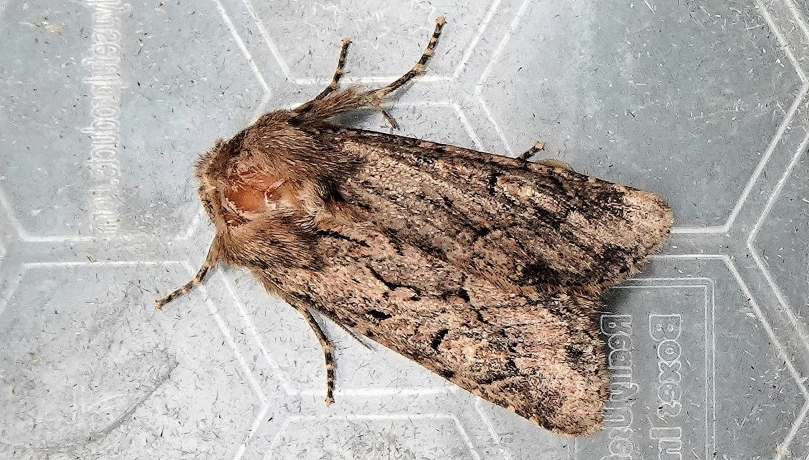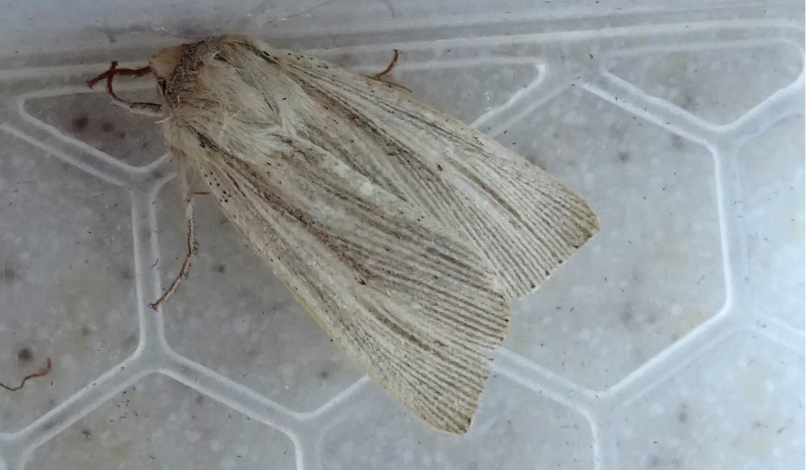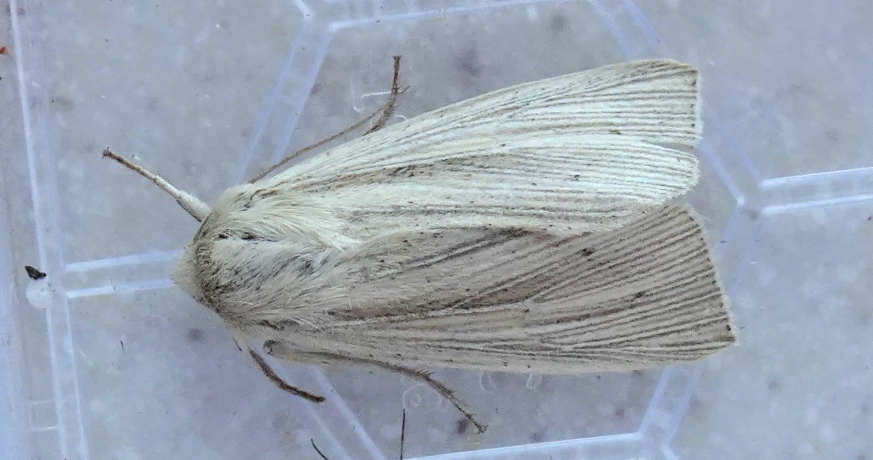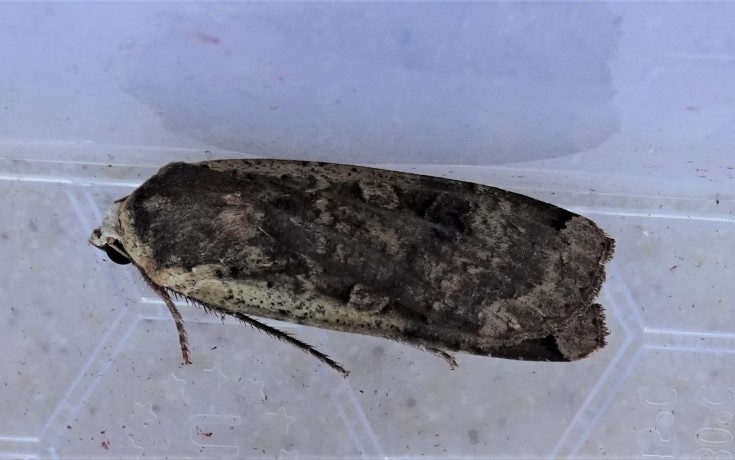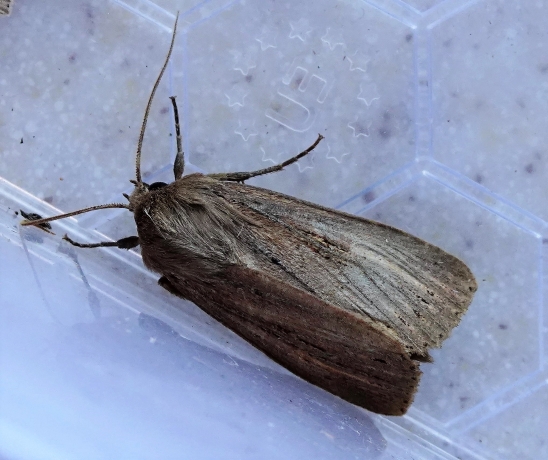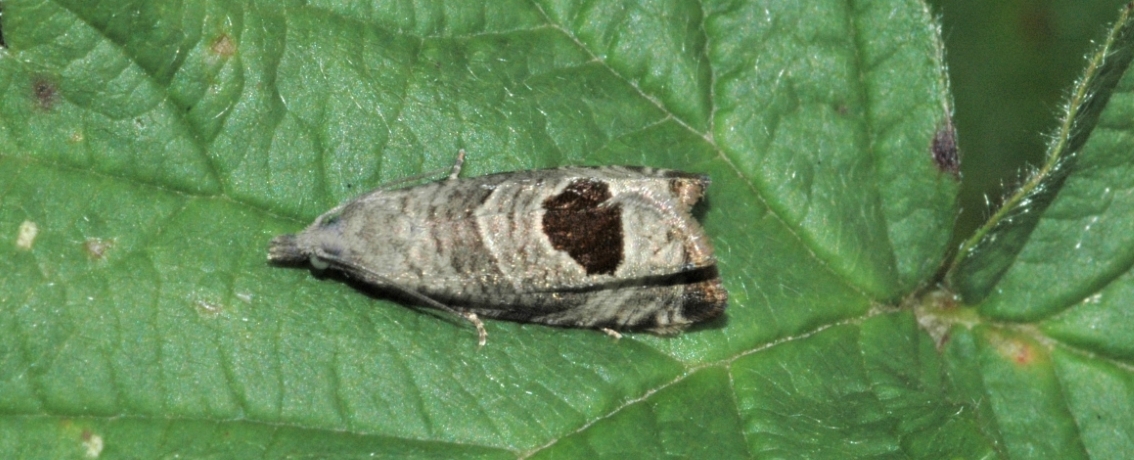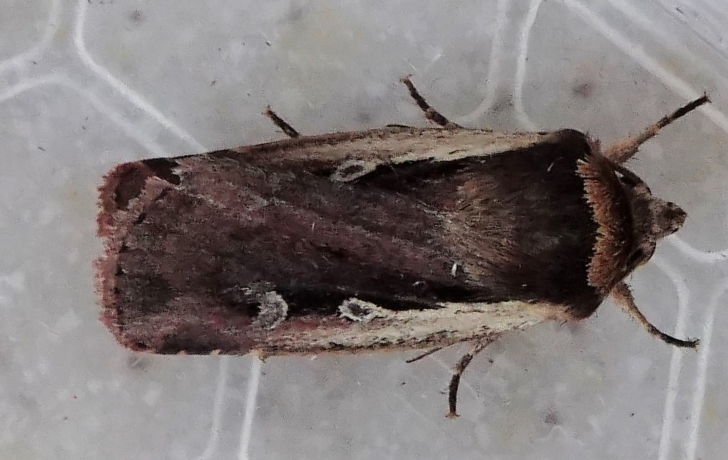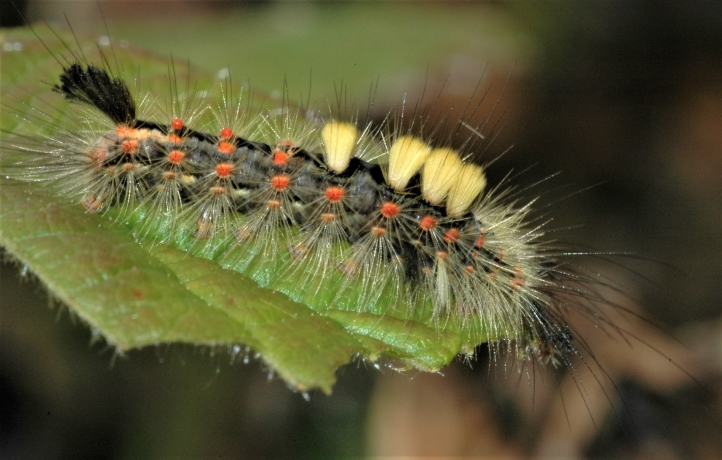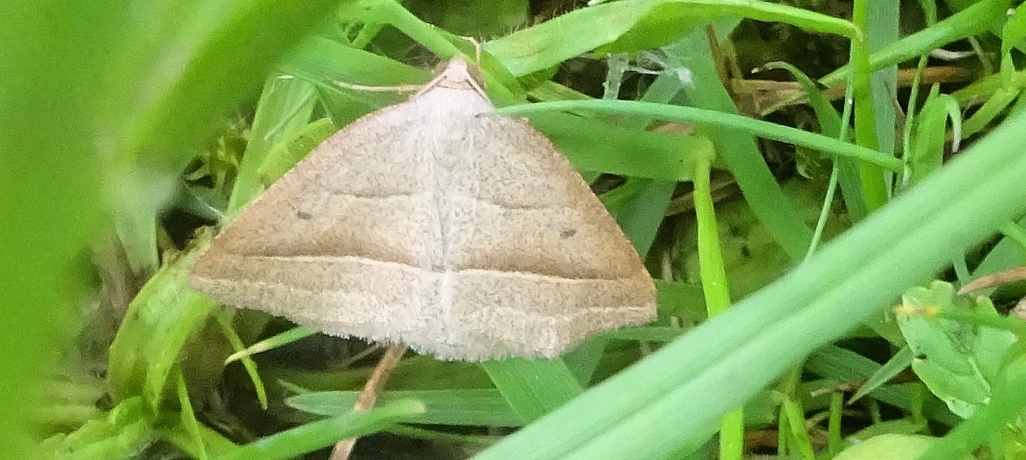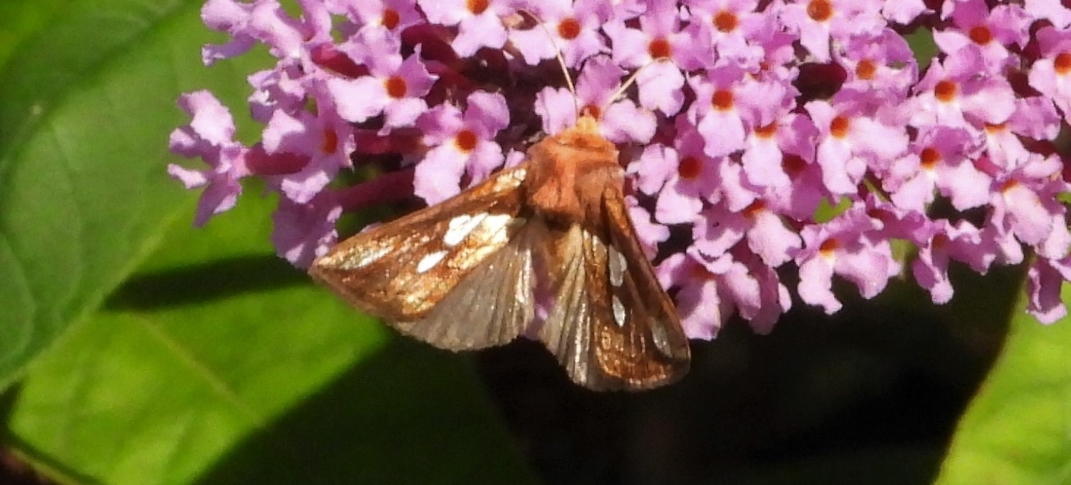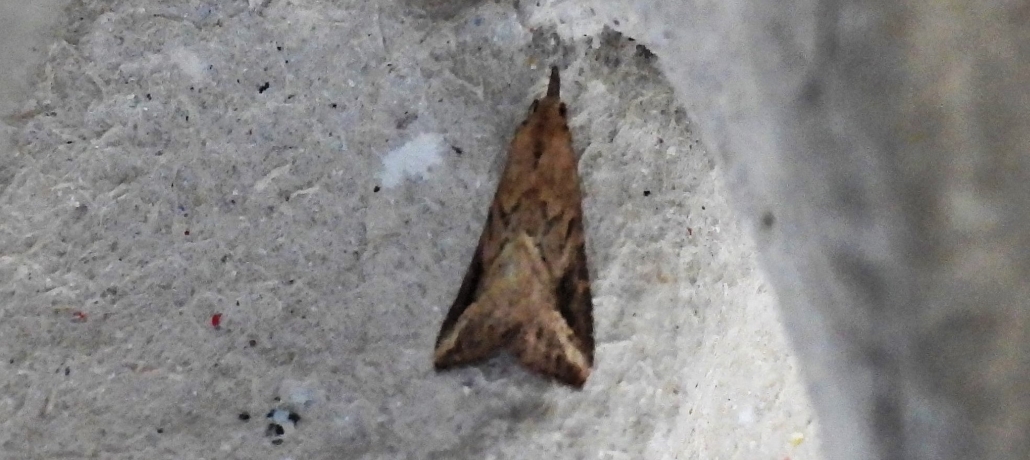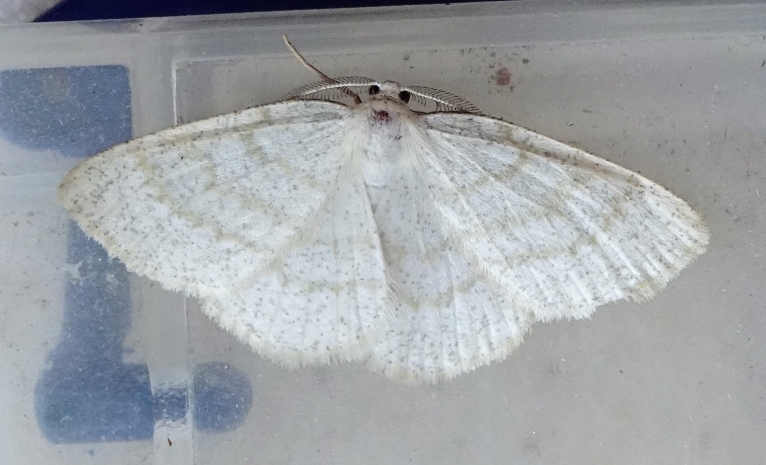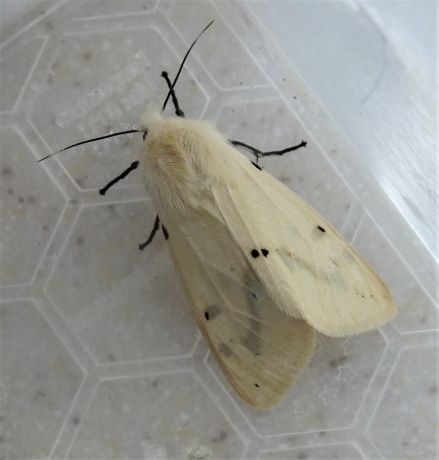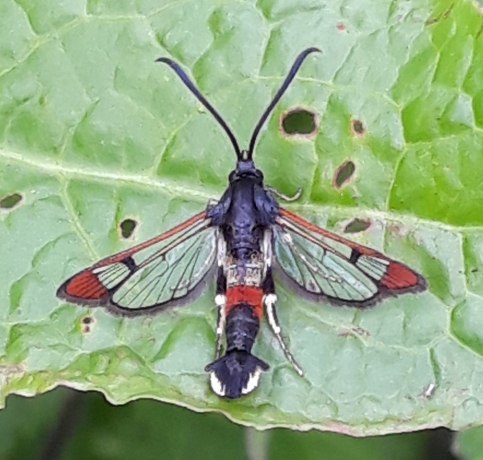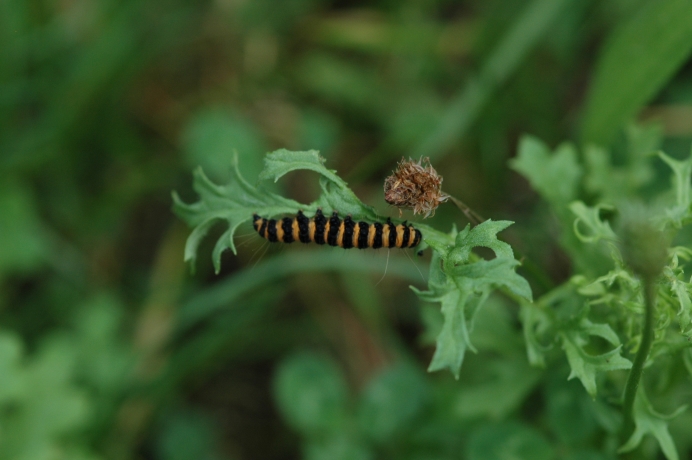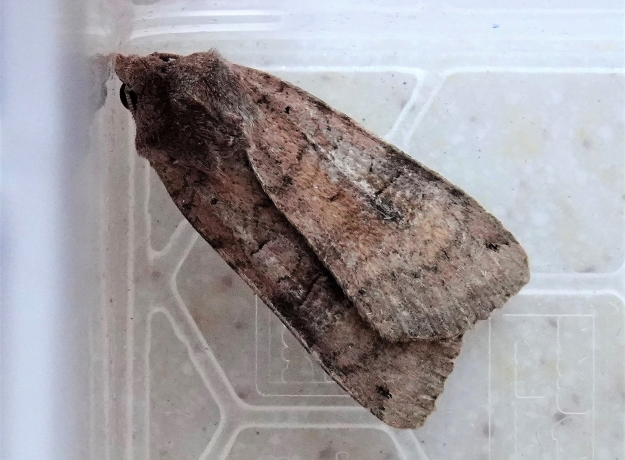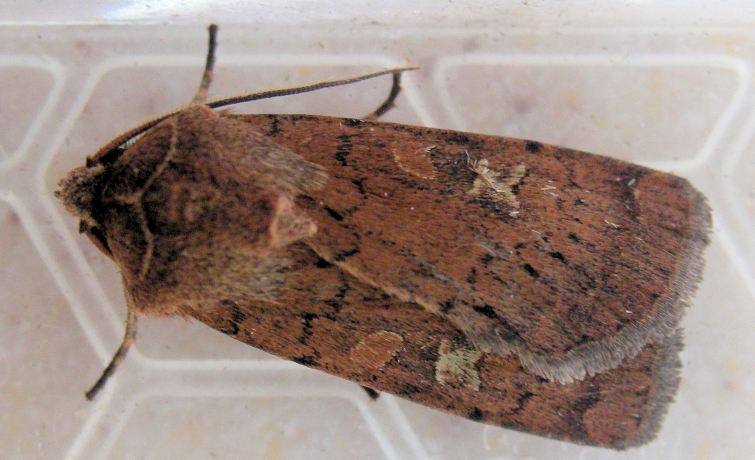This section looks at the Moth species Recorded at Woolston Eyes. All the species which follow are listed in alphabetical order by their scientific name, a necessity as some, especially the micro moths do not have an English common name or a widely accepted name.
List of Moths recorded at Woolston Eyes
The list above has been compiled from the following records each contains at least the first discovery of at least one of the species listed. Other records may exist and can be included on identification.
- 2022 Invertebrate Survey Woolston Eyes SSSI - Peter Boardman - WECG Annual Report 2022
- 2021-2022 A List of Species Photographed Over 1 Year on No.1 Bed - John Blundell & David Riley
- 2003 Woolston Eyes Annual Report Moths by Graham Cooke
- 1985-1995 List of Insects Recorded at Woolston Eyes SSSI by Steve McWilliam
Abrostola tripartita
Family: Noctuidae Common Name: Spectacle
Identification: wingspan 27-30mm, similar to the Dark Spectacle but has a central band greyish-brown speckled with darker brown and the marginal areas a lighter grey. Flies May to September.
Status: Common throughout Britain on wasteland, heaths, fens, grassland woodland margins where stinging nettle, the food plant of the larvae is common.
Abrostola triplasia
Family: Noctuidae Common Name: Dark Spectacle
Identification: wingspan 28-32mm, gets it’s name from the raised tufts on the thorax which viewed from the front resemble spectacles. Forewings blackish-grey inclining to a purplish tone, base of thorax and wings are dull straw to reddish-brown and the cross lines are reddish-brown. Flies June to August.
Statsus: Common in most of England, Wales but scarcer into Scotland in varied habitats, woodland margins, wasteland where stinging nettle, the larvae food plant is common.
Acleris comariana
Family: Tortricidae Common Name: Strawberry Tortrix
Identification: wingspan 13-18mm, a very variable species buffish-brown to reddish-brown with a large darker triangular markings from the edge of the forewings. Flies June and July and second broods from August to November. A. laterana is very similar and genitalia dissection may be required to separate.
Status: Fairly common across Britain, prefers wetland and boggy habitats. Larvae feed on strawberry plants wild and cultivated and relatives as potentilla, salix, geums.
Acleris forsskaleana
Family: Tortricidae - Common Name: Maple Leaftier Moth
Identification: wingspan is 12-17mm pale fawn-cream coloured moth with darker marbling on the forewing.
Status: Common across central England & Wales, scarce in Scotland, localised in southern regions. Active from dusk, June to September., foodplants are Maple & Sycamore.
Acleris holmiana
Family: Torticidae Common Name: Golden Leafroller Moth
Identification: wingspan c13mm, a fairly distinctive moth with rusty-orange ground colour, yellower just behind the head and in the forewing fringe with a triangular white patch, often edged with black on the wing edge. Flies in July and August.
Status: Widespread and common in Britain except in the far north in a varied range of habitat but the larvae feed on Rosaceous trees and shrubs including Hawthorn and Apple.
Acronicta leporina
Family: Noctuidae Common Name: Miller
Identification: wingspan 35-45mm, a whitish or greyish moth covered with tiny black speckling and larger black marks and a row of black spots on the forewing tips. Flies June to August.
Status: More common in the southern half of Britain in woodlands, heaths, shrubby areas. Larvae feed mainly on Birch species but include other deciduous trees.
John Blundell No.1 bed 12/08/2022 caterpillar found on oak leaves
Acronicta psi
Family: Noctuidae Common Name: Grey Dagger Moth
Identification: an attractive pale moth, 40mm wingspan, with subtle shades of changing white and grey shading and thin black linings and black and white banding on the legs. Indistinguishable from the Dark Dagger Moth without microscopic examination but the mature caterpillars are easily distinguished. The Grey Dagger caterpillar has no white spots either side of the central back stripe.
Status: Common in Britain, active from June-August, caterpillar feeds on a range of deciduous trees, Oak, Elm, Hawthorn, Birch.
Acronicta rumicis
Family: Noctuidae Common Name: Knot Grass
Identification: wingspan 30-35mm, a plainish black and grey mottled moth, variable in colour shades which can confuse with other Acronicta species but generally has a curved white mark on each forewing towards the rear. Flies May to July.
Status: Widely distributed and common in Britain, found in a wide variety of habitats associated with the food plants of the larvae, docks, plantains, teasel, other herbaceous plants and a few deciduous trees.
Acronicta tridens
Family: Noctuidae Common Name: Dark Dagger
Identification: wingspan 35-45mm, similar to the Grey Dagger from which it is difficult to separate in the adult form. Despite the name it is generally paler than the Grey Dagger and the white hind wings are indicative, but genitalia examination is usually necessary. Flies in June to August.
Status: It is widespread and quite common in England and Wales, woodland, shrubland, hedgerows especially where the larvae food plants of Hawthorn and Blackthorn are common.
Agapeta hamana
Family: Tortricidae - Common Name: Hook-marked Straw Moth
Identification: Wingspan of 15-24mm, yellowish with darker marking.
Status: reasonably common species in Britain occurs on waste ground and other places where the foodplant, thistle (Carduus), occurs. active from June through August, from dusk, but it can easily be disturbed during the day.
Agonopterix arenella
Family: Depressariidae Common Name: Agonopterix arenella
Identification: wingspan 19-23mm, rests with overlapping wings plainish moth of shades of brown or buff and greys often with a darker spot half-way down the leading edge of the forewings. Flies form emerging in August and over winters as an adult.
Status: widespread and fairly common in Britain, larvae feed on thistles and knapweeds.
Agonopterix subpropinquella
Family: Depressariidae Common Name: Agonopterix subpropinquella
Identification: wingspan 16-22mm, a fairly plain looking moth of shades of brown often darker thorax and single spots half-way down the leading edge of the forewings. Can be confused with other species and dissection is often necessary to separate. Flies in August and hibernates over winter but can be encountered.
Status: Fairly common throughout Britain except northern Scotland. Emerge in August, larvae food plants are thistles and knapweeds.
Agriopis marginaria
Family: Geometridae Common Name: Dotted Border
Identification: wingspan 37-32mm, there are a number of variations in colour and patterning of this species but generally males have orangish-brown forewings with a yellower tone band, a border of small black dots across the tips and paler hindwings. Females are virtually wingless. Flies February to April.
Status: A widespread and common species in Britain in woodlands, hedgerows, shrubland especially with willow, hawthorn, hazel, alder and birch are common.
Agriphila inquinatella
Family: Crambidae Common Name: Barred Grass-veneer
Identification: wingspan 23-29mm, relatively plain but not undistinctive with a pale, creamy, buffish ground with darker markings. Flies from June to September.
Status: Widespread and common in Britain, drier grassland and grassy places. Larvae food plants are grasses and often hide under stones amongst them suggesting they feed on the roots.
Agriphila straminella
Family: Crambidae Common Name: Straw Grass-veneer
Identification: wingspan 16-20mm, a fairly plain moth shades of pale browns with a central paler band longitudinal along the folded forewings and a terminal line of small black spots. Flies June to September.
Status: One of the commonest moths in Britain, in drier grassland and grassy places where the larvae feed on lower stems of grasses especially Sheep’s Fescue.
John Blundell No.1 bed 01/06/2022
Agriphila tristella
Family: Crambidae Common Name: Common Grass-veneer
Identification: wingspan c27mm a drab moth except for the creamy longitudinal stripe which branches in tow towards the wingtips. Flies from June to September in grassy places with the larvae feeding on various grass stem bases.
Status: Common throughout Britain and on the Reserve. Nocturnal but easily disturbed in daylight in the correct habitat.
Agrochola lychnidis
Family: Noctuidae Common Name: Beaded Chestnut
Identification: wingspan 30-35mm, has various forms the nominate has rufous forewings with black dots along the leading edges and blacks bars mid-way down the wing. Flies late in September and October.
Status: Common in England and Wales, scarce in Scotland, found in deciduous woodland clearings and margins, scrub, hedgerows and grassland. Larvae feed on low plants when small as ranunculus but moves to various trees and shrubs as Privet and Willow to mature.
Agrocola lota
Family: Noctuidae Common Name: Red-line Quaker
Identification: wingspan 33-40mm, a grey to grey-brown to brown forewing ground often with reddish tones has thin reddish lines along the wing tips which create a ‘V’ shape at rest with two black spots above . Flies September to October.
Status: Widespread in England and Wales, scarce in Scotland, found in damp conditions, flood plains, bogs, marshes, fens, damp meadows.Larvae food plants are Willow species,
Agrotis exclamationis
Family: Noctuidae Common Name: Heart And Dart
Identification: wingspan 30-40mm, quite a variable coloured moth from pale to dark brown but always has the distinctive dark markings which give it its name, a short black line and a general heart shaped spot below it on each forewing. It also has a black bar in front of the thorax viewed head-on. Flies May to July.
Status: Widespread and common in most of Britain, found in a wide variety of habitat. Common larvae food plants are brassicas, plantains, docks, Oak and Bramble.
Agrotis ipsilon
Family: Noctuidae Common Name: Dark Sword-grass
Identification: wingspan 35-50mm, a cryptic marked greyish to brownish with distinctive dark darts on the forewing which resemble a ‘Y’. The hind wings are pale with a whitish fringe. The larva feed on a variety of plant underground and the species has not been satisfactory proven to breed.
Status: a migrant moth occurs from March to November but most numerous August to October. More common in the south it can occur anywhere in migration.
Agrotis puta
Family: Noctuidae Common Name: Shuttle-shaped Dart
Identification: wingspan 30-32mm, sexually dimorphic, males have greyish to brown variegated forewings with darker markings and white hindwings and females plainer dark brown forewings and buffish hindwings. Multi-brooded can fly from May to October dependent on whether 2-3 broods.
Status: Widespread and common in England and Wales, scarce in Scotland, found in grassland scrub, open wooded area, wasteland with larvae food plants, low growing herbaceous plants, grasses and some shrubs.
Agrotis segetum
Family: Noctuidae Common Name: Turnip Moth
Identification: wingspan 27-40mm, variable in colour from pale buff to almost black. On the paler forms the three black bordered markings on each forewing are clear but the neat pale fringe with a dark inner black edging on the forewing and white hindwings in males, (females grey) should identify. Flies May and June and 2nd brood in August to October.
Status: Widespread and common in Britain but scarcer in Scotland, found in a very wide range of habitats but areas with Oak are favoured. There are many larvae food plants.
Allophyes oxyacanthea
Family: Noctuidae Common Name: Green-brindled Crescent
Identification: wingspan 35-45mm, a cryptic grey-brown to reddish-brown moth with large pinky-brown oval and circular marks edged black and the typical form has patches of metallic green scales. Flies September to November.
Status: Widespread and common in most of Britain, found in deciduous woodland, hedgerows and scrub. Larvae feed on a variety of trees and shrubs including Hawthorn and Blackthorn.
Alsophila aescularia
Family: Geometridae Common Name: March Moth
Identification: wingspan 25-35mm, ground colour varies from grey-brown to pale-brown and a broad darker brown central band which is toothed with a whiter border outside the band, the hindwings have a prominent black spot. Flies in March and April.
Status: Widespread and common in Britain, found in broad-leaved woodlands, hedgerows, shrubby areas, on the Reserve, Alder, Sycamore, Ash, Birch and Hawthorn would be food plants for the larvae.
David Riley No.1 bed 12/08/2022
Amphipoea agg.
Family: Noctuidae Common name: Eared Moth
Identification: Wingspan 28-34mm, a difficult species to separate without microscopic examination, the most widespread and common is Amphipoea oculea. Ground colour is varying shades of brown with a chequered outline pattern and noticeable pale squiggle mark on each forewing. Active July-September. and foodplant of caterpillar are low plant stems and roots.
Status Generally common throughout Britain, prefers damp places.
Amphipyra tragopoginis
Family: Noctuidae Common Name: Mouse Moth
Identification: wingspan 33-38mm, a plain, almost drab moth but quite distinctive with brown to dark-brown with a glossy sheen and has three small black dots set as the points of a triangle, one above and two below and buffish hindwings which darken slightly towards the tips. Flies July to September.
Status: Widespread and common in Britain, found in and around woodland, grassland, wasteground marshes, fens where the food plants occur. On the Reserve Hawthorn, Nettle, Plantains, Oak, Willow and others.
Anania hortulata
Family: Crambidae Common Name: Small Magpie
Identification: wingspan 24-28mm, an unmistakeable and familiar moth with yellowish body parts and white wings with black borders and inner black spotting. Flies in June and July.
Status: Very common in southern half of Britain less so moving northwards. Inhabits anywhere were Nettle is common, the larvae common foodplant along with wooundworts, mints, horehounds and bindweeds.
John Blundell No.1 bed
Anthophila fabriciana
Family: Choreutidae Common Name: Common Nettle-tap
Identification: A small moth, wingspan 10-15 mm and a cryptic mix of shades of brown & greys. Flies during the day from May to August, nettle is the foodplant of the caterpillar.
Status: Common throughout Britain, check nettle stands.
Apamea crenata
Family: Nocturidae Common Name: Clouded-bordered Brindle
Identification: wingspan 36-44mm, the typical form has pale brown forewings with darker brown markings one mid-way along the outer edge and in the at rest position three peaks a central one and one either side of it. The head and shoulders are also the same dark colour. Flies June and July.
Status: Widespread and mostly common across Britain, found in wet grassland, fens, marshes, woody clearings. Larvae food plant are various grasses.
Apamea lithoxylea
Family: Noctuidae Common Name: Light Arches
Identification: wingspan 45-50mm, forewings whitish with ochreous tones with few obscure slightly darker marks.
Status: Fairly common in most of Britain, flies June to August and frequents drier grassy places with the larvae feeding on a number of grasses and their roots.
Apamea monoglypha
Family: Noctuidae Common Name: Dark Arches
Identification: wingspan 45-55mm, ground colour from dark-grey, brownish-grey, browns to almost black, all cryptically marked. Most, except the really dark specimens have a pale ‘zigzag’ subterminal line and obvious black marks on the back. The hind wings are whitish with dark shading at the margin. Flies in July and August.
Status: Common throughout most of Britain, occurs in a variety of habitats but requires grassy places for the food plants of the larvae which feed on the stems and roots.
Apamea ophiogramma
Family: Noctuidae Common Name: Double Lobed
Identification: wingspan 32-35mm, variable ground colour, straw to dark-grey with a large distinctive broad chestnut to almost black patch on the outer edge of the forewings. The hindwing is pale tan to brown with fine dark veining. Flies June to September.
Status: Widespread but locally common across Britain. Found in fenland, reed beds, marshes, damp meadows and woodland. Larvae food plants are Reed Canary and Reed Sweet grasses.
Apamea remissa
Family: Noctuidae Common Name: Dusky Brocade
Identification: wingspan 36-42mm, principally two general forms well marked and obscure marked, the latter being the most common. The typically marked is quite distinctive being a pale greyish-brown ground with cryptic darker markings but a large blackish marks in the middle and along the trailing edge of the forewings. Flies in June and July.
Status: Common throughout most of Britain, found in a variety of habitats including woodland, dry meadows and marshy places. Larvae feed on a number of grasses, Reed Canary Grass being common.
Apamea sordens
Family: Noctuidae Common Name: Rustic Shoulder-knot
Identification: wingspan 32-42mm, a dull brownish and greyish ground with paler kidney shaped stigmata and broad cross band but the black streak at the base of each forewings, a shoulder knot is generally recognised. Flies in May and June.
Status: Generally common in Britain and frequents grassy places, meadows etc. with the larvae feeding on a number of grasses, Cock’s-foot being common.
Apamea unanimis
Family: Noctuidae Common Name: Small Clouded Brindle
Identification: wingspan 30-38mm, a brownish, greyish cryptically marked moth like others but the smaller size and the white edged kidney shaped stigmata are the most obvious features to look for. Flies in June and July.
Status: Common but local throughout Britain in marshy places, reedbeds, fens, marshes, damp meadows and woodland. Larvae feed on grasses Reed Canary Grass is most common.
Aplocera plagiata
Family: Geometridae Common Name: Treble Bar
Identification: wingspan 37-43mm, confusion with Lesser Treble Bar moth is possible. A pale greyish-brownish ground colour with 3 distinct darker cross bars. Lesser generally has a more angled inner crossbar then the Treble Bar. Males of the two species are separated by the tip of the abdomen, pointed in the Treble Bar and rounded in Lesser Treble Bar.
Status: Fairly common across Britain in grassland, wooded rides, heaths, preferably calcareous. Flies July-August and larvae feed on St. John’s Wort
Apoptomis turbidana
Family: Tortricidae Common Name: Birch Marble
Indentification: wingspan 16-20mm. generally dark coloured, with some pale flecking, for two-thirds the length of the wings then a sudden change to a broad whitish band with some dark speckling. Flies July to September.
Status: Common throughout Britain, frequents woodland, shrubland wherever Birch is frequent, being the principle larvae food plant.
Aporophyla lueneburgensis (lutulenta)
Family: Noctuidae Common Name: Deep-brown Dart
Identification: wingspan 36-44mm, historically this species was thought to be found south of the MIdlands and A lueneburgenis occured north of the midlands. The two species are in 2024 now considered the same. species. Variable in ground colour from greys to dark brown and generally with subtle darker markings but very white hindwings.Flies between August and October.
Status: Widespread and common, the larvae feed on grasses, legumes and bushes as Hawthorn and heather in moorland habitats.
Apterogenum ypsilon
Family: Noctuidae Common Name: Dingy Shears
Identification: wingspan 32-42mm, often greyish-brown but can be reddish-brown or blackish. Has a pale subterminal line with 2 or more blackish wedges, often weak. Other crosslines inconspicuous as are oval and kidney stigmata. Flies in June and July.
Status: Widely distributed in Britain except in Scotland, inhabits scrubland, woody places, marsh and fen and wet woodland especially with Willow which is a prime larvae food plant.
Archips podana
Family: Tortricidae Common Name: Large Fruit-tree Tortrix
Identification: wingspan 18-26mm, sexual dimorphism is pronounced in the species males being slightly smaller and more colourful. The central area is dark red-brown in males and merely an outline in females. Hindwings are creamy-grey. Flies from May to September but peak period is June and July.
Status: Fairly common throughout lowland Britain, frequents gardens, hedgerows, woodland, shrubland with the larvae feeding on the flowers and fruit of a number of deciduous trees, Apple, Plum, Cherry, Blackthorn etc.
Archips rosana
Family: Tortricidae Common Name: Rose Tortrix
IdentificationL wingspan 15-24mm, sexually dimorphic, males smaller and more colourful. Generally a brownish ground colour with darker markings on the males. Females have a only obscure outlines or lines in place of the males dark markings and a more chequered pattern. Flies July to September.
Status: Quite common in Britain frequents woody areas, gardens, parkland, woodland, hedgerows, orchards with the larvae feeding on the flowers and fruit of deciduous trees and fruits as raspberry.
Arctia caja
Family: Erebidae Common Name: Garden Tiger Moth
Identification: wingspan 45-65mm, an obvious pattern, dark brown ground which is crazed with a white lattice. Hind wings are orange with a series of large black spots with a blueish hue. Flies in July and August.
Status: Widespread and common but appears to be on the decline. Frequents more open habitats, meadows, rough grassland, marshland, gardens, parkland with larvae feeding on a number of herbaceous plants.
Argyresthia brockeella
Family: Argyresthiidae Common Name: _ Argyresthia brockeella_
Identification: wingspan 9-12mm, a tiny moth, metallic bronze base colour with whitish or paler spots. Has a head-down wing tip up resting position. Flies June and July.
Status: Common throughout Britain, habitat varies but prefers areas with good tree and shrub numbers, especially Alder and Birch, the larvae food plants.
Argyresthia goedartella
Family: Argyresthiidae Common Name: Argyresthia goedartella
Identificatio: wingspan 10-13mm, a white base colour with gold crosslines the middle on shaped like a ‘Y’. Flies June to August.
Status: Very common in Britain, larvae feed on Birch and Alder mining in small shoots and the catkins.
Argyresthia pygmaeella
Family: Argyresthiidae Common Name: Argyesthia pygmaeella
Identification: wingspan 10-13mm, a pale/whitish ground colour with brown infill to leave white spots down the closed forewings. Flies in June to August.
Status: Fairly common across Britain, larvae feed on Willow species mining into young shoots and catkins.
Autographa gamma
Family: Noctuidae Common Name: Silver Y
Identification: wingspan 35-40mm, a greyish-brownish ground intricately marked with darker shades and a distinctive silver coloured mark shaped as a ‘Y’, the greek letter gamma, in the centre of each forewing. Flies from May to September.
Status: a migrant species which could occur anywhere with peak numbers in autumn following the arrival of northern immigrants.
Autographa jota
Family: Noctuidae Common Name: Plain Golden Y
Identification: wingspan 38-46mm, very similar to the Beautiful Golden Y moth, A. pulchrina but has fewer and less distinct metallic markings and generally is much redder in the ground colour. Flies from June to August.
Status: Fairly common throughout Britain but scarer in Scotland. Frequents woodland, heaths, fens, and scrub. Larvae feed on a number of plants but Nettle is common.
Autographa pulchrina
Family: Noctuidae Common Name: Beautiful Golden Y
Identification: wingspan 35-40mm, forewings largely brownish-purple with crosslines yellowish edged with brown. The golden Y is more often a V and a dot below and the kidney spot can resemble the number 8. Flies June and July.
Status: Widespread and common in Britain, found in a variety of habitats, wasteland, woodland, hedgerows, gardens, larvae food plants, nettle, honeysuckle, ragwort & woundworts.
Axylia putris
Family: Noctuidae Common Name: The Flame
Identification: wingspan 27-32mm, generally a creamy-greyish buff ground with the wings wrapped tightly around the body to mimic a broken stick, whitish hind wings with a dark line along the margin.
Status: fairly common in Britain becomes more localised northwards. Found in woody areas, shrubland, hedgerows, parkland, gardens. Flies June and July, larvae food plants include docks, plantains and bedstraws.
Biston betularia
Family: Geometridae Common Name: Peppered Moth
Identification: wingspan 35-60mm, in the typical form a black and white speckled moth with hindwings the same but generally overall a lighter shade. Some melanistic forms are common. Flies from May to August.
Status: Common and widespread but more localised in Scotland. Found in wooded, shrubby places with the larvae feeding on a number of deciduous trees.
Bryophila domestica
Family: Noctuidae Common Name: Marbled Beauty
Identification: wingspan 20-25mm, the forewings are white with dark grey cryptic markings which mimic the lichens the eggs are laid on. The intensity of the markings varies considerably and a proportion of specimens have orangey to yellowish markings. Flies in July and August.
Status: Fairly common over most of Britain but scarcer and localised in Scotland. Found in various habitats including suburban and the larvae feed on various lichens, commonly rock growing species where the adults often rest.
Cabera exanthemata
Family: Geometridae Common Name: Common Wave
Identification: wingspan 30-35mm, a white moth with a sprinkling of brownish scales and three curved pale brown crosslines. Flies May to August.
Status: Widespread and fairly common throughout Britain, found in damp places, marshes, watercourses, fens, reedbeds, woodland, Larvae food plants, Willow and Aspen.
Cabera pusaria
Family: Geometridae Common Name: Common White Wave
Identification: wingspan 25-28mm, a white moth, whiter than C. exanthemata with the three pale brown crosslines not as curved. Flies May to August.
Status: Widespread and common throughout Britain, found in woodland, shrub, parkland, hedgerows. Larvae food plants are a variety of trees, especially Birch.
Callistege mi
Family: Erebidae Common Name: Mother Shipton
Identification: wingspan 25-30mm, a distinctively marked moth, ground colour is very dark with a grey wash and whitish line markings. The name comes from the profile of an old crone or witch depicted on each forewing centre. Flies in May and June.
Status: Reasonably common over much of Britain scarcer in the far north frequents downland, rough and waste grass land anywhere were clover, medics, trefoils and lucerne are common which are the food plants of the larvae.
Caloptilia stigmatella
Family: Gracillariidae Common Name: Caloptilia stigmatella
Identification: wingspan 12-14mm, a distinctive moth chestnut brown with a whitish triangular patch across the mid forewing. An upright, head held high stance at rest, typical of Caloptilia species. Flies June and July and again in September, larvae, a leaf miner, feed on Willow and Poplar species.
Status: Frequent across England in areas with quantities of Willow and or Poplar.
Camptogramma bilineata
Family: Geometridae Common Name: Yellow Shell
Identification: wingspan 20-25mm, a variable species from yellow to dark brown with four sub-species. The fore and hindwings are covered with brown or whitish crosslines with generally 3 or 4 white cross bars usually bordered with black lines and the wing margin is black and wavy. Flies from June to August.
Status: Generally common and occupies a range of habitats but prefers damper environments. Larvae feed on a mix of low growing plants including sorrel, chickweeds.
Caradrina clavipalpis
Family: Noctuidae Common Name: Pale Mottled Willow
Identification: wingspan 26-35mm, a grey to darkish grey, tinged ochreous with a number of crosslines and 3 or 4 black spots on the leading edge of the forewings and white hindwings. Flies July to September.
Status: Common over much of Britain, frequents meadows, grassland and arable land with the larvae feeding on the grain of various cereal crops.
Caradrina morpheus
Family: Noctuidae Common Name: Mottled Rustic
Identification: wingspan 32-38mm, a darkish brown-grey ground colour and characterised by darker blurred oval and kidney marks without any edging and hindwings are pale glossy white. Flies from June to August.
Status: Common throughout England, frequents varied habitats and the larvae feed on a number of herbaceous plants, including Nettle and Dandelion.
Carcina quercana
Family: Peleopodidae Common Name: Carcina quercana
Identification: wingspan 16-22mm, a yellowish-brown base with reddish markings and a yellowish border at wing tips and similar coloured rectangular patch along the leading edge of the forewings. Flies July and August.
Status: Widespread and common in Britain and is associated with Oak and Beech Trees which are the principle food plants of the larvae.
Cataclysta lemnata
Family: Crambidae Common Name: Small China-mark
Identification: wingspan 18-24mm, adults are sexually dimorphic. The wings are white with pale-brown markings, males are slightly smaller and whiter than females but both have a distinctive row of blue-centred black dots on the hindwings. Flies June to August.
Status: Fairly common throughout Britain and found around slow moving and still water. The larvae are semi-aquatic feeding on Duckweed making floating rafts from parts of the plant.
John Blundell No.1 bed 23/05/2022 resting on an Oak leaf.
Celypha lacunana
Family: Tortricidae Common Name: Dark Strawberry Tortrix
Identification: wingspan 16-18mm a cryptic mix of brown shades and crossbands. For the more expert, it can be distinguished by the lacuna in the median fascia crossband.
Status: Common in Britain, woodland fringes, hedgerows, verges and grassy places when present it can easily be flushed during the day.
John Blundell No.1 bed 29/07/2022
Celypha striana
Family: Tortricidae Common Name: Barred Marble
Identification: Wingspan c20mm ground colour a pale brown to reddish-brown with subtle brown-grey marbling pattern. It is distinguished by the prominent broad darker-brown central crossline. Active June to September.
Status: Common in Britain more so in the southern regions. Inhabits grassy places with the caterpillar feeding principally on dandelion roots.
Ceramica pisi
Family: Noctuidae Common Name: Broom Moth
Identification: wingspan 32-37mm, variable in colour from greyish-brown to a deep chestnut-brown and also in the intensity of the markings. The undulating creamy sub-terminal crossline although shared by a few other moth species is common through the colours. Flies between May and July
Status: Quite common in Britain, found in woodland, scrub. heathland with the larvae feeding on Broom, Bracken and other plants and trees.
Cerapteryx graminis
Family: Noctuidae Common Name: Antler Moth
Identification: wingspan 27-39mm, the sexes are dimorphic with the females larger, 35-39mm than the males, 27-32mm and more subdued colouring. The wings are brown, speckled with black and distinctively marked with a bold white branched streak which give rise the the species name. Flies from June to September.
Status: Fairly common over much of Britain and frequents moorland, rough pasture and general grassy places. The larvae feed on grass species.
Chesias legatella
Family: Geometridae Common Name: The Streak
Identification: wingspan 30-35mm, at rest the wings are folded and held in a tent-like posture. The species is quite variable with forewing ground colour from buff to dark brown but is distinguished by the long pale/white streak down the forewings. Hindwings are plain pale buff to grey-brown. Flies late from September through October.
Status: Widespread and quite common wherever the larvae foodplant Broom occurs.
Chloroclystis v-ata
Family: Geometridae Common Name: V-pug
Identification: wingspan 14-19mm, when first emerged the wing colour ground is green with distinctive black ‘V’ marks amongst finer black marks. Although the green fades with age the size, hue, triangular rest position and ‘V’ marks are diagnostic. Flies May to August.
Status: Fairly common in England becomes scarcer in northern parts. Frequents varied habitats especially with Bramble and Elder present which are common larvae food plants.
John Blundell No.1 bed 20/06/2022
Chrysoteuchia culmella
Family: Crambinae Common Name: Garden Grass-veneer
Identification: wingspan 20mm one of our commonest moths and distinguished by the two angled crosslines and metallic gold fringe to the forewings. Flies in June and July and the food plant are various grasses at the bases.
Status: Common on the Reserve, easily disturbed walking through grassy areas as the adults rest head-down on grass stems during the day.
Cirrhia icteritia
Family: Noctuidae Common Name: Sallow
Identification: wingspan 27-35mm, a pale yellow-buff ground colour with varying amounts of darker brown markings. Generally can detect a dark brown spot, usually with a pale centre in the middle of each forewing but these may be difficult to detect in the darker veriants. Flies in September and October.
Status: Widespread and common in most of Britain, found in damper woodland, hedgerows, marshland, fens etc. Larvae feed on Willow and Poplar first then herbaceous plants.
Clepsis spectrana
Family: Tortricidae Common Name: Cyclamen Tortrix
Identification: wingspan 169-22mm, a variable species with ground colour varying from a creamy-yellow to chestnut or dark brown. However, the two darker markings at the forewing edge are constant with the upper rectangular and lower rounded. Flies in May and June.
Status: Common in much of Britain except northern Scotland. Occurs in a variety of habitats but appears to prefer damper areas, marshes, fens, wet meadows and woodland. Larvae feed on in spun leaves of herbaceous plants.
Cloroclysta truncate
Family: Geometridae Common Name: Common Marbled Carpet
Identification: wingspan 24-30mm, a remarkably varied species either shades of brown or greys and browns and an all-dark form. Intrinsically all have four crossbands the 2nd generally the broadest and 3rd and 4th are narrow. Flies May and June and August to October with second brood.
Status: Very common throughout Britain in a wide range of habitats and food plants.
Cosmia trapeina
Family: Noctuidae Common Name: Dun-bar
Identification: wingspan 25-33mm, a variable species with ground colour from ochreous-yellow to dark brown with a varying wide undulating central cross band edged black on the forewing. which differs from the other Cosmia species so is distinctive. Flies July to September.
Status: Common over much of Britain frequents woody areas, woodland, hedgrows, copses, gardens and parkland. Larvae feed on a number of deciduous trees.
Crambus lathoniellus
Family: Crambidae Common Name: Hook-streak Grass-veneer
Identification: wingspan c.20mm, a buffish/light brown moth with long whitish longitudinal streak down each forewing which end abruptly with sloping gaps. Generally the forewing terminates in a thin border of black dots in a whitish ground. Flies from May to August but easily disturbed during the day.
Status: Widespread and common throughout Britain, frequents grassy habitats with the larvae feeding on various grass species.
Crambus pascuella
Family: Crambidae Common Name: White-banded Grass-moth
Identification: wingspan 21-26mm, has a large, wide whitish streak longitudinal down the forewing but is similar to a few other species which it may be confused with. Hindwings are greyish. Flies May to September.
Status: Widespread and common throughout Britain. Frequents grassy places on which the larvae feed on on grass roots.
Crambus perlella
Family: Crambidae Common Name: Satin Grass-moth
Identification: wingspan 21-28mm, typically a plain pale creamy-white moth with a silky lustre. There is however a marked form which has heavy brown streaking. Flies in July and August.
Status: Relatively common throughout much of Britain and frequents grasslands where the larvae feed on the bases of various grasses.
Crocallis elunguaria
Family: Geometridae Common Name: Scalloped Oak
Identification: wingspan 32-41mm, shows some variation in ground colour from pale-ochreous to buffish-brown to dark brown and in the intensity of the markings but is usually easy to identify with the broad central crossband with a single black spot. Flies in July and August.
Status: Widespread and generally common in Britain, frequents varied habitats with deciduous trees and shrubs as these are the food plants of the larvae.
Cucullia chamomillae
Family: Noctuidae Common Name: Chamomile Shark
Identification: wingspan 40-42mm, forewing grey-brown ground colour with smoky infusion and are long and narrow. Hind wing browner, paler toward the base and a dark band in the whitish fringe giving a 3-banded effect, separates from C. umbratica. Flies April to June.
Status: Reasonably common throughout Britain, found in waste land, margins, wayside meadows. Larvae feed on Compositae species including Chamomile.
David Riley No.1 bed 04/08/2022
Cydia splendana
Family: Tortricidae Common Name: Cydia splendana
Identification: a micro moth of circa 15mm wingspan , variable brown-grey to dark grey colouring but tones and shade darken towards the forewing tips with a dark subterminal triangular patch.
Status: Frequent over much of Britain around habitat with Oak and Sweet Chestnut where the caterpillar feed inside the acorns or chestnuts, active from July to August.
Cydia ulicetana
Family: Tortricidae Common Name: Common Gorse Moth
Identification: wingspan 12-16mm, a small greyish to brownish moth with darker markings, principally at the rear of the forewings. Flies May to July with extensions to September if second broods occur.
Status: A fairly common species in Britain, frequents heathland, scrub, moorland generally around Gorse or Broom the larvae food plants, feeding inside the seed pods.
Deilephila Elpenor
Family: Sphingidae Common Name: Elephant Hawk-moth
Identification: wingspan 45-60mm, a large streamlined looking moth, unmistakable with pink and greenish bands. Flies from May to July.
Status: A common species throughout Britain in various habitats, rough grassland, hedgerows, heathland, woodland. Larvae commonly feed on Rose-bay Willowherb amongst other plants.
Depressaria pastinacella
Family: Depressariidae Common Name: Parsnip Moth
Identification: wingspan 23-28mm, a plain moth with cryptic patterns of brown and buffs. Flies September to May, the adults are active over the autumn and winter.
Status: Widespread and fairly common in Britain, the larvae feed on Wild parsnip but also Hogweed inside which they pupate.
Diachrysia chrysitis
Family: Noctuidae Common Name: Burnished Brass
Identification: wingspan 28-35mm, unmistakable with spectacular brassy, metallic sheen on the forewings. There are two forms which differ in the brown central cross-band, complete in aurea and broken to 2 blotches in juncta. Flies from June to September.
Status: Common over much of Britain frequents, waste-ground, scrub, rough grassland, marshy place with the larvae commonly feeding on Nettle amongst other plants.
David Riley No.2 bed 12/05/2023
Diaphora mendica_
Family: Erebidae Common Name: Muslin Moth
Identification: wingspan 28-35mm, males are creamy-brown, females are white, both have small black spots speckled over the wings.
Status: reasonably common across England & Wales less so in Scotland. Frequents many open landscapes, active May & June. Female diurnal, male nocturnal, food plants dock, dandelions, plantains.
Diarsia rubi
Family: Noctuidae Common Name: Small Square-spot
Identification: wingspan 28-33mm, generally brownish with varying reddish hue, a round and kidney shaped stigmata of lighter shade on each forewing form the points of a square inside of which are 2 small black dots. Flies in May to June and August to September if double brooded.
Status: Common in Britain in a wide variety of habitats but prefers damper, marshy conditions with larvae feeding on a number of herbaceous plants.
Diasaria mendica
Family: Noctuidae Common Name: Ingrained Clay
Identification: wingspan 28-35mm, highly variable in colour, pale straw to orange or reddish to brown or blackish, progressing northerly. The Diasaria black dot is present but also a black quadrant above the ovoid stigmata and a larger black mark between the ovoid and kidney stigmata. Flies in June & July.
Status: Common throughout Britain, found in well wooded areas and moorland. Larvae feed on a number of plants, particularly Bramble and Bilberry.
Dicestra trifolii
Family: Noctuidae Common Name: The Nutmeg
Identification: wingspan 30-35mm, cryptically marked and coloured from light to dark brown often with reddish hues. The most recognisable feature is a ‘W’ shape in the white subterminal crossline. Although some other Noctuidae exhibit this feature they are generally larger species. Flies from June to September if double brooded.
Status: Common in southern England becomes localised further north and west and scarce in Scotland. Frequents wasteland, agricultural land and varied habitats but Clover seems a common larvae food plant.
Dichrorampha montanaana
Family: Tortricidae Common Name: Northern Yarrow Moth
Identification: wingspan 12-14mm, a seemingly undistinguished moth but this and its light colouration is the lead to recognition, although worn individuals of similar species need to be considered. There is a paler curved centre patch and paler fringes on the forewings. Flies June to August.
Status: Fairly regular in Northern Britain but less so in the southern half of the country. Frequents dry grassy pastures and places, with larvae food plants including Yarrow and Tansy.
Dichrorampha petiverella
Family: Tortricidae Common Name: Yellow-spot Yarrow Moth
Identification: wingspan 10-13mm, a mid to dark brownish ground with a bright clearly defined creamy crescent on the folded forewings. There are similar species and care or microscopic work is required to separate them. Flies June to August.
Status: Fairly common throughout Britain, frequents meadows, rough pastures, hedgerows and the larvae feed on the roots of Yarrow and Tansy.
Drymonia rificornis
Family: Noctuidae Common Name: Lunar Marbled Brown
Identification: wingspan 35-40mm, a brownish-grey ground colour with two white crosslines, above the lower the area is clouded white and contains a black crescent mark on each forewing. Hind wings are smoky-grey with a curved pale line. Flies April to June.
Status: Common in southern Britain, less so moving north. Inhabits deciduous woodland with Oak a common larvae foodplant.
Ecliptopera silaceata
Family: Geometridae Common Name: Small Phoenix
Identification: wingspan 23-27mm, a distinctive patterned moth shared with 5 other species. Comprises a darker brown ground with 2 whitish/buff crossbands the lower much broader than the upper. A form also has the central brown band broken by white/buff lines on wing veins. Flies May to July, also August & September if doubled brooded.
Status: Quite common in England and Wales less so in Scotland. Inhabits a range of woody areas and open habitats. Common larvae food plants are Willowherbs.
Ectropis crepuscularia
Family: Geometridae Common Name: The Engrailed
Identification: wingspan 30-40mm, buff to greyish variably with darker cryptic markings and a pale inner edge crossline. Both wing sets are the same. Flies March & April and July & August if double brooded. The species is now amalgamated with Small Engrailed.
Status: Common in England & Wales, less so in Scotland. Inhabits Hedgerows, gardens, parkland and other woody places. Larvae feed on deciduous tree/shrub foliage.
John Blundell No.1 bed 29/07/2022
Eilema griseola
Family: Erebidae Common Name: Dingy Footman
Identification: Wingspan 30-40mm an olive-grey ground with creamy-buff border and well rounded, resembles a melon seed-shape separates from Common Footman. Active July to September.
Status: Common inhabits damp habitats. marshes, wet meadows, water margins, damp woodland
Elachista argentella
Family:Elachistidae Common Name: Elachista argentella
Identification: wingspan 11-12mm, an all whitish moth with hair-like wingtip fringes. Flies June to August.
Status: Fairly common throughout Britain, found in grassy places and meadows. The larvae feed on a number of grasses, mining into the leaf blades.
Elachista cerusella
Family:Elachistidae Common Name: Elachista maculicerusella
Identification: wingspan 10-12mm, a small whitish moth with black blotches towards the wingtips and hair-like fringe. Flies May to August.
Status: Relatively common throughout England, southern Scotland and eastern Wales in damp habitats, marshes, fens, waterway edges. Larvae feed on Reed Canary Grass and Common Reed.
Elachista rufocinerea
Family: Elachistidae Common Name: Elachista rufocinerea
Identification: wingspan 10-11mm, a white/pale ground colour speckled and splashed with reddish tones and hairy-like fringe to forewing tips. Flies April to June.
Status: A widespread and common moth in Britain, occurs in grassy places on which the larvae feed mining through the grass blades.
Electrophaes corylata
Family: Geometridae Common Name: Broken-barred Carpet
Identification: wingspan22-30mm, one of the five similar marked moths as Ecliptopera silaceta above but has the brown central crossband narrows and is broken in the middle. Flies in May and June.
Status: Fairly common in most of Britain and inhabits woodland, scrubland, hedgerows and other bushy/woody places. The larvae feed on a number of tree and shrub foliage.
Endrosis sarcitrella
Family: Oecophoridae Common Name: White-shouldered House-moth
Identification: wingspan 15-21mm, a cryptic grey-brown patterned moth unmistakeable due to the distinctive white shoulders and head. Broods throughout the year inside buildings.
Status: Common throughout Britain, larvae live of dried animal and vegetable matter.
John Blundell No.1 bed 22/07/2022
Ennomos alniaria
Family: Geometridae Common Name: Canary-shouldered Thorn
Identification: wingspan 38-42mm, a yellow-brown ground with two darker curved lines and speckling but it is the bright yellow hair-like thorax and shoulders which distinguishes the species. Flies July to October and the food plant are various deciduous trees.
Status: Common in Britain found around woodland, scrub, hedgerows and a range of other habitats.
Epiblema foenella
Family: Tortricidae Common Name: White-foot Moth
Identification: wingspan 17-26mm, one of the most distinctive Epiblema species with a large whitish angular marking on the back and rectangular wedge at the base of the wings on a dark brown ground. Flies
Status: Fairly common in south and western Britain, scarcer in the north and east. Inhabits rough pasture, wasteland, scrub where the larvae feed on roots and lower stems of Mugwort.
Epiblema scutulana
Family: Tortricidae Common Name: Thistle Root-borer
Identification: wingspan 18-23mm, requires dissection to be certain of identification or described as E. scutularia agg. Males have a grey-red-brown ground with large whitish patches on the central back and base of the resting wing. Flies in May and June.
Status: Fairly common throughout Britain and inhabits rough ground, meadows wasteland and can be found resting on the foodplants Musk and Spear Thistles, by day.
Epinotia nisella
Family: Tortricidae Common Name: Brindled Poplar Tortrix
Identification: wingspan 12-17mm, a very variable species with 4 forms, nisella_has a black or orangey dorsal blotch, _pavonana has a long extended dorsal blotch, decorana has the central area overlaid reddish-brown and _cinereana_has no solid dorsal blotch. Flies July and August.
Status: Widespread and fairly common throughout Britain, varied habitat wherever Willow and Poplar, the larvae food plants are found.
David Riley No.1 bed 12/08/2022
Epirrhoe alternata
Family: Geometridae Common Name: Common Carpet
Identification: Wingspan 20-25mm, a pale ground colour with crosslines and bands of shades of greys and/or browns. Nocturnal, active July-September, foodplant of caterpillar commonly bedstraw.
Status: Reasonably common in Britain, found in a variety of habitats.
Eucosma cana
Family: Tortricidae Common Name: Hoary Tortrix
Identification: wingspan 15-23mm, a fairly distinctive species with a buffish or greyish ground colour and darker longitudinal streaks. The pale streak on the forewing separates it from E. hohenwartiana. Flies from June to August.
Status: Generally common and widespread in Britain, found on rough and waste ground, meadows and grassy places with the larvae food plants of various thistles and Black Knapweed.
Eupithecia abbreviata
Family: Geometridae Common Name: Brindled Pug
Identification: wingspan 18-22mm, open elongated wing at rest. A grey-brown with ochreous tones ground colour with various dark short streaks. The thin elongated black discal spot is indicative in the forewing which is narrower and more pointed than E. dodoneata. Flies in April and May.
Status: Widespread and common in Britain except north Scotland, inhabiting deciduous woodland, hedgerows and shrubby places, Larvae feed on Oak and Hawthorn.
Eupithecia assimilate
Family: Geometridae Common Name: Current Pug
Identification: wingspan 17-22mm, general rufous-chestnut ground colour with an elongated black spot or dash on each forewing and a broken white line in a series of dots with the last being the largest. Wings not folded at rest and flies Jun and July.
Status: Widespread and common in lowland Britain, found in cultivation, gardens, and anywhere the food plants are found. Larvae food plants are Hop and the Currents, red or Black.
Eupithecia centaureata
Family: Geometridae Common Name: Lime-speck Pug
Identification: wingspan 16-20mm, a very distinctive and slender winged moth with creamy-whitish wings, a large dark blotch on the leading forewing edge, dark smudging on the trailing edge and a dark abdomen. Flies from April to September, generally in two broods.
Status: Widespread and common throughout Britain except the Scottish Highlands. Found in a wide range of habitat with larvae feeding on a variety of low growing plants.
Eupithecia icterata
Family: Geometridae Common Name: Tawny Speckled Pug
Identification: wingspan 20-23mm, greyish-brown ground colour with the whole central part of the forewing orange-brown with a small black discal spot. Flies July and August.
Status: Widespread and common through most of Britain found on rough pastures, meadows, waste ground anywhere with the larvae food plants Yarrow and Sneezewort are common.
Eupithecia subfuscata
Family: Geometridae Common Name: Grey Pug
Identification: wingspan 17-21mm, 2 main forms the typical grey-brown and also common in urban areas the dark grey form ab. obscurissima. Has wavy paler crosslines and black centre spot on forewings. ab. obscurissima may require dissection to be confident of identification. Flies in May and June.
Status: Common and widespread throughout most of Britain in a variety of habitats, grassland, rough pasture, wasteland where Yarrow and Sneezewort, the larvae food plants are common.
Eupithecia succenturiate
Family: Geometridae Common Name: Bordered Pug
Identification: wingspan 20-23mm, the distinguishing features are an all white thorax and white tip to abdomen, size and the continuation of white into the forewing central area but not as much as E. scentaureata Flies in July and August.
Statues: Common in England but local in the South-west and Northern parts, Wales and Scotland. Occupies dry meadows, rough pastures, wasteland and suburban areas with Mugwort the common larvae food plant.
Eupithecia tenuiata
Family: Geometridae Common Name: Slender Pug
Identification: wingspan 14-16mm, a small greyish brown ground moth with paler wavy crosslines, a rounded black central spot and rounded forewing tips. Flies in June and July.
Status: Widespread and reasonably common over much of Britain, inhabits damper places, marshes, wet meadows, fens with the larvae food plants being Willow species.
David Riley No.1 bed 22/07/2022
Eupithecia virgaureata
Family: Geometridae Common Name: Golden Rod Pug
Identification: wingspan 17-23mm, a difficult moth to separate, the shape of the male abdominal plate is useful if the dark costal marks, black vein chequering and pale metathoracic spot are indistinct on melanic specimens. Flies May to August if two broods occur. The food plants are Golden-rod and Ragwort.
Status: Mainly a north and western range becoming scarce south of a line from the Wash to the Severn, classified as local.
Eupithecia vulgate
Family: Geometridae Common Name: Common Pug
Identification: wingspan 10-12mm, a greyish-tawny to reddish-brown ground colour relatively plain with a small black dot (sometimes absent) on forewings and a broken white subterminal line ending in a larger but still small white mark. Cross lines in paler forms are visible and toothed and curve towards the wing edges. Wings not folded at rest and flies May to June and second brood in August.
Status: Widespread and common in England, Wales and lowland Scotland, found in wooded areas, shrub, hedgerows, clearings. Larvae feed on a variety of deciduous trees and shrubs, on the Reserve mainly Willow and Hawthorn.
Euplexia lucipara
Family: Noctuidae Common Name: Small Angle Shades
Identification: wingspan 37-32mm, a distinctively marked moth with a broad dark brown central crossband which is pinched in the middle as a hour-glass and the lower outer angles filled white. Above and below are pinkish-brown areas and a dark subterminal band. Flies in June and July with a second brood possible in August and September.
Status: Widespread and common over much of Britain, inhabits woodland and woody areas, parkland, suburban areas. Larvae feed on a number of herbaceous and woody plants.
John Blundell No.1 bed 10/06/2022 caterpillar on nettle and bramble sward
Euproctis similis
Family: Erebidae Common Name: Yellow Tail
Identification: wingspan 28-35mm, a white hairy looking moth with a dark smudge/spot on each forewing. Female is larger than the male and has a tuft of yellow hairs at the tip of her abdomen (used to cover the eggs after laying). Flies in July and August with the caterpillar feeding on various deciduous trees and shrubs.
Status: Common throughout England and Wales except the high peaks, scarce in Scotland. Woodland, scrub, open shrubby places.
John Blundell No.1 bed 27/05/2022 Drinker Moth caterpillar
Euthrix potatoria
Family: Lasiocampidae Common Name: Drinker Moth
Identification: wingspan 45-65mm. This species shows sexual dimorphism with the yellowish females slightly larger than the orange-brown males but both sexes show the distinctive white spot on each forewing and the slightly darker crosslines. Flies July to September, food plants are a range of grasses and reeds.
Status: Common throughout south & west Britain & east England. Inhabits grassy habitats but is more numerous in damper places, marshes & watersides.
Euxoa obelisca
Family: Noctuidae Common Name: Square-spot Dart
Identification: wingspan 35-40mm, a localised species more or less confined to coastal sites around the south and west of Britain and eastern Scotland. Occasional sightings have occurred inland. The 4 British Euxoa species can be very similar and difficult to separate; the forewing is purplish-brown, the oval and kidney stigmata are clear and greyish-ochreous with the patch inbetween black. The hindwings are white in males and greyish in females. Flies July and August.
Status: A localised species more or less confined to rocky and hilly coastal sites around the south and west of Britain and eastern Scotland. Occasional sightings have occurred inland. Larvae food plants are regarded to be generally low growing with Common Rock-rose and Lady’s Bedstraw are known to be.
Evergestis forficalis
Family: Crambidae - Common Name: Garden Pebble
identification: Wingspan is 25-28mm and at rest are held in a definite steep tent like shape when viewed obliquely, straw coloured with brown makings.
Status: Active from May to September, foodplants are cruciferous, especially cultivated brassicas. As indicated by the vernacular name, this moth is common in gardens, and similar habitats throughout Britain.
John Blundell No.1 bed 22/07/2022 David Riley No.1 bed 22/07/2022
Falcaria lacertinaria
Family: Drepaninae Common Name: Scalloped Hook-tip
Identification: wingspan 27-35mm, a pale brown moth with two darker crosslines and a scalloped edge to the trailing forewing edge. Rests with the forewings arched over the back to resemble a dried leaf. Double brooded, it is active May and June and then August.
Status: Widespread over most of Britain, scarer on higher-grounds, food plant Birch.
Fercula bicuspis
Family: Notodontidae Common Name: Alder Kitten
Identification: wingspan 30-35mm, a striking moth white ground colour with dark grey blotches with orange highlights, behind the head, a broad central crossband which pinches in towards the leading edges of the forewing and towards the wing tips. There are also small blackish spots between the larger blotches and a row along the forewing fringes. Flies from May to July.
Status: A localised species occurring in southern and central England rarely as far north as Cumbria. Inhabits woodland, scrub and shrubby places with the presence of Alder and Birch, the larvae food plants.
Gandaritis pyraliata
Family: Geometridae Common Name: Barred Straw
Identification: wingspan 28-33mm, the standing posture, with forewings extended to completely hide the hindwings and raised above the resting platform, alone can identify this species. It is a buffish-yellow ground with 3 slightly darker crosslines and dark smudging along the trailing wing edge. Flies May to August.
Status: Widespread and common, except north Scotland and inhabits lowland grassy places. The larvae food plants include bedstraws and cleavers.
Glyphipterix simpliciella
Family: Glyphipterigidae Common Name: Cocksfoot Moth
Identification: wingspan 6-9mm, a tiny moth, variable from pale brown to dark grey with white marks and a crossline at the rear of the forewings and a black spot at the wing tips. Flies May to July visiting flowers.
Status: Common in Britain, inhabits grassland and grassy places. Larvae feed on Cocksfoot grass seeds and pupate in the hollow stems.
Gortyna flavgo
Family: Noctuidae Common Name: Frosted Orange
Identification: wingspan 35-40mm, grey-brown ground forewings with a broad central crossband of golden-yellow, with similar coloured oval and kidney shaped stigmata, and two blotches at the wing base to the thorax and wing tips. Flies August to October.
Status: Common throughout England and Wales, less so in Scotland. Inhabits rough grassland, wasteland, woodland rides, ditch banks, marshes, fens with larvae food plants generally robust herbaceous such as thistles, burdocks, foxgloves.
Graphiphora augur
Family: Notuidae Common Name: Double Dart
Identification: wingspan 35-42mm, a relatively plain moth with forewing a pale brown to darker grey-brown colour. The oval and kidney marks are generally marked in black as are two darts below them. Flies in June and July.
Status: Common throughout Britain in woodland, bushy places, hedgerows and grassland with the larvae feeding on willows, birches, Blackthorn and Hawthorn.
Grapholita compositella
Family: Tortricidae Common Name: Triple-stripe Piercer
Identification: wingspan 9-10mm, unmistakable moth, generally dark coloured grey to brown with 4 distinctive curved white lines across the folded wings and 8 short white lines on each forewing edge. Flies May to August with double broods.
Status: Widely distributed, common but occasionally localised. Frequents shorter grassy places, with larvae feeding on Clover, either in the stems or inside folded leaves.
Habrosyne pyritoides
Family: Drepanidae Common Name: Buff Arches
Identification: wingspan 35-40mm, has a combination of intricately marked russet-brown and white arches on a smooth grey ground colour which is unmistakeable. The hindwings are grey with white margins. Flies in July and August.
Status: It is fairly common in England and Wales but absent from Scotland except from southern parts. Inhabits woodlands, parkland, hedgerows, young plantations with the larvae feeding on Rubus species, Bramble commonly.
Hadena bicruris
Family: Noctuidae Common Name: The Lychnis
Identification: wingspan 30-40mm, a dark greyish-brown ground with fine whitish makings and a solid dark tooth-shaped mark between and just above the oval and kidney shaped white bordered stigmata. Flies in June and July and again in August and September if double brooded.
Status: Fairly common in Britain, found in woodlands and other woody places, heathland, parks and gardens. Larvae food plants are the seed pods of various campions and related species, but especially Red Campion.
Hecatera bicolorata
Family: Noctuidae Common Name: Broad-barred White
Identification: wingspan 28-35mm. whitish ground colour with a broad, sometimes almost black, central crossband. The leading edge of the forewing appears quite straight. Flies June to August.
Status: Found throughout England and Wales but more commonly in the south and east with a scattered localised distribution elsewhere. Inhabits downland, wasteland, scrub and suburban areas with the larvae food plants are hawkweeds and hawkbeards.
Hedya nubiferana
Family: Tortricidae Common Name: Marbled Orchard Tortrix
Identification: wingspan 15-21mm, one of many species which mimic bird droppings for camouflage. Two-thirds dark cryptically marbled marked and one-third whitish is the basic pattern of this species and is separated from the similar H. pruniana by having the two forewing dark spots in the centre of the white patch and not on the wing edge at the apex. Flies from June to August.
Status: Common in Britain frequenting hedgerows, orchards, shrubby places and suburban areas with the larvae feeding on a variety of trees including Hawthorn and Blackthorn.
David Riley No.1 bed 05/08/2022
Hedya pruniana
Family: Tortricidae Common Name: Plum Tortrix
Identification: Wingspan of c18mm, basically a moth at rest which is 2/3rds dark and 1/3rd white. The dark is made up of cryptic markings and bands of grey, brown and black. This species closely resembles Hedya nubiferana but can be separated by the position of the two black spots in the white section of the forewing. Active May to July.
Status: Common in Britain inhabits woodland, parkland, hedgerows and scrub.
David Riley No.1 bed 22/07/2022
Helcystogramma rufescens
Family: Gelechiidae Common Name: Orange Crest
Identification: wingspan 14-18mm, a plain reddish-brown moth with fringed forewing tips. Flies June to September with the striking black and white caterpillar feeding on a variety of grasses.
Status: Common in Britain, rough grassland. scrub and general grassy clearings.
Helotropha leucostigma
Family: Noctuidae Common Name: Crescent
Identification: wingspan 37-44mm, ground colour is shades of brown generally mahogany has a paler inverted ‘Y’ on its back, a usually well marked kidney spot and a faint oval mark above and almost as large. Flies in August and September.
Status: Widespread but localised, found in damp woodland, marshes, reedbeds and moorland. larvae food plants are marshland species as Yellow Flag.
Hepialus humuli humuli
Family: Hepial - Common Name: Ghost Moth
Identification: wingspan of 45mm, the female is slightly larger, male white, female buffish.
Status: Active from June to August, flies from dusk when mating typically occurs, they have no functioning mouth parts and do not feed.
Hepialus lupulinus
Family: Hepialidae Common Name: Common Swift
Identification: wingspan 25-40mm, highly variable in colour from red-brown to pale brown, to grey, all with white markings of varying boldness. Flies May and June. Larvae feed on grass and other plant roots underground.
Status: Common in Britain except Scotland, grassy places.
Herminia grisealis
Family: Erebidae Common Name: Small Fan-foot
Identification: wingspan 24-28mm, a brown to grey-brown ground, quite plain except for three darker crosslines on the forewings, a more or less straight one across the thorax, a fainter zigzag central line and a down-curved subterminal line and a narrow curved crescent between the upper and central crosslines. It is very similar to H. tarsipennalis but the subterminal line is much straighter, not dipping to the wing apex. Flies from June to August.
Status: Fairly common in Britain, frequents varied habitats with good tree and shrub cover with the larvae feeding on a number of deciduous trees and Bramble.
Hoplodrina blanda
Family: Noctuidae Common Name: Rustic
Identification: wingspan 31-35mm, very similar to The Uncertain, compare, described as being less yellow-brown is overall smoother in contrast and texture and slightly glossy. The oval and kidney stigmata are less contrasting to the ground colour. Flies from June to August.
Status: Fairly common throughout Britain except Scotland where it is more localised. Found in varied habitats, rough grassland, wasteland, hedgerows, suburban gardens with the larvae food plants being a range of low growing herbaceous species.
Hoplodrina octogenaria
Family: Noctuidae Common Name: The Uncertain
Identification: wingspan 28-34mm, very similar to the Rustic H. blanda but with some small differences which collectively may ease separation. The Uncertain appears to be rougher, less smooth, looking than the rustic, the reniform kidney spot is generally more contrasting to the ground colour than the Rustic’s and looking at the underwing, a witness of the the kidney spot, ovoid spot and the outer part of the adjacent crossline can be seen, In the Rustic only the kidney spot is visible as a rounded witness. Flies in June to August.
Status: Fairly common in England and Wales becoming local in Scotland. found in lowland in rough pastures, woodland, wasteland, hedgerows and grassy places with the larvae food plants of docks, and plantains.
David Riley No.1 bed 26/08/2022
Hydraecia micacea
Family: Noctuidae Common Name: Rosy Rustic
Identification: Wingspan variable, from 28-45mm, as is ground colour but generally a mix of browns with a dark and lighter inverted ‘V’ pattern to the rear of the closed forewings. Active August - October. The caterpillar feeds on roots especially Rumex family species.
Status: Common in Britain, best searched for on wasteland, poor soils, waysides, where docks and sorrels plentiful.
Hydriomena frurcata
Family: Geometridae Common name: July Highflyer
Identification: wingspan 23-30mm, variable in both ground colour, from greenish to reddish-brown & greyish-brown and the colour of the two crossbands, one at the shoulders & the other central, from blackish to pale brown. Shows a short black dash in the wing apex. Flies July & August.
Status: Rather common over most of Britain, preferring woodland margins, hedgerows, scrub with larvae food plants including willows and Bilberry.
Hypena proboscidalis
Family: Erebidae Common Name: The Snout
Identification: wingspan 25-38mm, unmistakeable because of the long snout but has a plain pale to russet-brown to grey-brown ground colour with two darker crosslines and a subterminal line of whitish dots. Flies in June to August.
Status: Common throughout Britain in woodland, scrub, hedgerows, rough pastures, marshes and anywhere were Nettle the larvae food plant is common.
Idaea aversata
Family: Geometridae Common Name: Riband Wave
Identification: wingspan 23-30mm, variable in ground colour from fawn to sandy brown and in the extent of peppering with blackish scales, providing a rough texture. Two forms exist, the ribboned form has a dark grey band between the 2nd & 3rd crosslines and the plain form just has fine crosslines. Flies from June to August.
Status: Ribboned form is more common in the south and the plain form more common in the north. Frequents woodland, heaths, rough pastures, gardens, hedgerows with the larvae food plants including docks, dandelions and other low species.
Idaea dimidiate
Family:Geometridae Common Name: Single-dotted Wave
Identification: wingspan 13-18mm, a pale straw or greyish-brown ground with obscure crosslines but a dark partial outer crossband is diagnostic, even on faded specimens. A row of black dots along the wing edges and two pairs of larger dots on the inner edge of the hindwings adjacent to the abdomen are also characteristic. Flies from June to August.
Status: Generally common throughout Britain except northern Scotland, frequents damp places, marshes, fens, river banks, ditches and hedgerows with larvae food plants including Cow Parsley, Hedge Bedstraw and Burnet Saxifrage
Incurvaria masculella
Family: Incurveriidae Common Name: Incurvaria masculella
Identification: wingspan 12-16mm, a longhorn moth. Males have comb-like antennae, an unusual feature for micro-moths. Dark bronze with 2 white spots and, when viewed obliquely they show a purplish metallic sheen. Flies may and June.
Status: Frequent in much of Britain, woodland, hedgerows. Larvae mine leaves of trees and bushes, especially Hawthorn.
Lacanobia oleracea
Family: Noctuidae Common Name: Bright-line Brown-eye
Identification: wingspan 32-37mm, has a uniform brown to dark brown ground colour, a white subterminal crossline which contains the shape of a ‘W’ and white bordered oval and kidney stigmata with the kidney centre a lighter shade of brown - the brown-eye. Flies from May to July.
Status: Common over most of Britain and inhabits suburban gardens, coastal salt marshes and general waste and rough grassland. Common larvae food plants are goosefoots, oraches and Redshank.
Lacanobia thalassina
Family: Noctuidae Common Name: Pale-shouldered Brocade
Identification: wingspan 35-38mm, a brownish ground colour, varying in shade, with cryptic markings in paler and darker shades. The pale shoulder patches, from which the name is derived, the oval and kidney stigmata and a white crossline with the letter ‘W’ depicted at the centre on each forewing identify the moth. Flies in June and July.
Status: Common in Britain and frequents woodland and moorland. Larvae feed on a number of trees, including Oak and Willow and various plants, including Knotgrass.
Laothoe populi
Family: Sphingidae Common Name: Poplar Hawk-moth
Identification: wingspan 65-90mm, a mix of greyish and brownish crossbands and patches with numerous darker crosslines. At rest it has a strange attitude, holding the hindwings forward of the forewings and the abdomen curved upwards at the rear. If disturbed it flashes flashes the hindwings which has a large chestnut patch which is normally hidden. Has a small whitish crescent in the centre of the forewing. Flies May to July.
Status: Our commonest Hawk-moth, distributed through most of Britain and frequents suburban gardens and parkland, woodlands, heaths, moorland and fens and marches. The larvae common food plants are Poplar, Aspen and Willows.
Lathronympha strigana
Family: Torticidae Common Name: Slender Rufous Tortrix
Identification: wingspan 14-18mm, a rather plain but distinctive species, bright orangey-rufous ground colour with no markings except several greyish metallic makings towards the rear of the wings. Flies in June and July and August and September if second brooded.
Status: Fairly common in Britain but more so in the southern half. Frequents open woodland, scrub, hedgerows and similar places with the larvae food plant commonly St. John’s Wort.
Limnaecia phragmitella
Family: Cosmopterigidae Common Name: Limnaecia phragmitella
Identification: wingspan 15-22mm, a fairly plain pale brown or buffish coloured with two white bordered darker spots on the forewings, The hind wings appear feathery. Flies from July.
Status: Widespread and common in the right habitat of fens, marshes and water margins where the larvae feed inside the Bulrush heads.
David Riley No.1 bed 29/06/2022
Lomaspilis marginata
Family: Ennominae Common Name: Clouded Border
Identification: Wingspan 30-38mm, distinctive bold black and white markings which although show considerable variation should not cause confusion in identification. Active from May-July, nocturnal and the caterpillar foodplants are willows, poplars and aspen.
Status: Fairly common throughout Britain, best searched for in open willow scrub or clearings, edges of willow patches.
Lomographa temerata
Family: Geometridae Common Name: Clouded Silver
Identification: wingspan 22-26mm, a largely white moth with a small black dot outside a dark smudge in the forewing centre and two diffuse or incomplete dark cross bands which smudge at the wing-tip and a thin black border on the inner edge of the fringe. Wings not folded at rest and flies may to July.
Status: Widespread and common in most of Britian, more local in Scotland, found in woodland, hedgerows, shrubby areas with larvae food plants Hawthorn and Blackthorn amongst others.
David Riley No.1 bed 26/08/2022
Luperina testacea
Family: Noctuidae Common Name: Flounced Rustic
Identification: Wingspan 30-35mm with forewings a cryptic brown or greyish colour and patterning which are both variable and hind wings almost a plain cream. Active in August-September. Caterpillar feeds on low grass stems and roots.
Status: Common across Britain, best searched for in dry grassland and grassy places.
Mamestra brassicae
Family: Noctuidae Common Name: Cabbage Moth
Identification: wingspan 37-45mm, a considerably variable moth in size, colour and markings, generally greys, browns and darker shades with crosslines and a kidney spot and oval spot above it are usually always depicted but separated by the presence of a curved spur on the foreleg tibia. Flies from May to September with multiple broods.
Status: Widespread and common in most of Britain, less so in the highlands of Scotland. found in a wide variety of habitats and food plants though Brassicas are common.
Melanchra persicariae
Family: Noctuidae Common Name: Dot Moth
Identification: wingspan 37-40mm, a rough textured very dark moth, almost black-brown, with a conspicuous white kidney spot on each forewing. Flies in July and August.
Status: Widespread and common in England and Wales but uncommon except in the extreme south in Scotland. Inhabits a range of suburban gardens, roadside verges, wasteland, rough grassland with the larvae feeding on a range of herbaceous and woody plants.
Mesapamea secalis agg.
Family: Noctuidae Common Name: Common Rustic
Identification: wingspan 27-30mm, has been split into 3 species recently which are difficult to separate due to their variability without dissection. Forewing has kidney marks pale buff or white record as .agg. Flies in July and August.
Status: Widespread and common in Britain, found in fens, marshland, meadows, clearings, grassy waste land. Larvae food plants are various grasses.
Mesoligia furunculi
Family: Noctuidae Common Name: Cloaked Minor
Identification: wingspan 10-12mm, variable in colour from cryptic buffs to darker browns but the basic bicolour pattern of broad band of brown, broad band of lighter brown persists in all but the uniform form. Flies from July to September.
Status: Widespread and fairly common in Britain, dry grassy places, sand dunes, larvae feed on grasses.
Micropterix aruncella
Family: Micropterigidae Common Name: Micropterix aruncella
Identification: wingspan 7mm, a tiny moth with metallic forewings and hair tufts. Flies May to August and feeds on pollen of various plants.
Status: Widespread in western and eastern central England but local. Inhabits dry areas.
Micropterix calthella
Family: Micropterigidae Common Name: Micropterix calthella
Identification: wingspan 9mm, has metallic bronze forewings with purplish hints and hair tufts. Flies during the day in May and June and feeds on pollen of various plants.
Status: Frequent in most of Britain, damp woodland, scrub, hedgerows woody margins.
Mimas tiliae
Family: Sphingidae Common Name: Lime Hawk-moth
Identification: wingspan 55-70mm, distinguished by colour and wing shape from all other British Hawk-moths. The forewings have a distinctive scalloped rear edging and subtle shades of green and pink with a dark centre crossband although variable in colour and extent. Flies in May and June.
Status: Reasonably common in England and Wales but scarcer in the northern half. Inhabits woodland, hedgerows, suburban gardens, parks. Larvae feed on a number of deciduous trees including Lime.
Mompha epilobielia
Family: Momphidae Common Name: Buff Mompha
Identification: wingspan 10-13mm, a pale yellow-ochreous ground colour with darker markings, variable in intensity, size and number. Similar to M. ochracella but separated by dark legs with pale bands vs all pale yellowish-ochreous and dark grey hindwings vs pale yellowish. Flies commonly in July and August, but can be seen anytime in the year as it hibernates.
Status: Widespread and common in Britain, found in varied habitats, wasteground, rough pastures, anywhere were the larvae food plants willowherbs are common.
Mompha raschkiella
Family: Momphidae Common Name: Mompha raschkiella
Identification: wingspan 9mm, a tiny moth brown and grey shades with some patchy orange colour and a white spot on the outside edge of the forewings just before the tip fringe. Having two broods it flies in May and August.
Status: Widespread and classed as common in Britain, the larvae feed on Rosebay Willowherb, mining the leaves.
Mormo maura
Family: Noctuidae Common Name: Old Lady
Identification: wingspan 55-65mm, a large dull coloured moth. The ground colour is orcherous-grey with the central forewing darker and browner with a series of dark dots along the leading edge and a broad crossband at the rear with the apex corners usually paler. Flies July and August.
Status: Widespread but generally localised, frequents damp locations, marshes, fens, wet ditches as well as wasteland and gardens. Hides out in old buildings during the day. The larvae feed on a number of herbaceous plants in autumn and woody plants including Blackthorn in spring.
Mythimna albipuncta
Family: Noctuidae Common Name: White-point
Identification: wingspan 30-35mm, a relatively plain looking moth with generally a reddish-brown ground colour although shade varies. Has a small white roundish spot in place of the normal ‘Noctuidae’ kidney spot and a broad central crossband of slightly darker shading. Flies July to September.
Status: An immigrant occurring mostly in southern England and the south-east but can occur almost anywhere during migration if conditions are right.
Mythimna comma
Family: Noctuidae Common Name: Shoulder-striped Wainscot
Identification: wingspan 32-37mm, forewings are a drab-grey to buffish ground colour with prominent venation as other ‘wainscots’ but with much stronger dark markings including a noticeable black shoulder streak which gives the moth its common name. Flies in June and July.
Status: A fairly common moth throughout Britain and frequents grassy places, rough meadows etc. with the larvae feeding on various grasses especially Cocks-foot.
Mythimna farrago
Family: Noctuidae Common Name: Clay
Identification: wingspan 35-40mm, a relatively plain looking moth with a pale brown ground with a pinkish hue and a small creamy white mark on forewings. Has a large black chevron mark on the underside of the abdomen. Flies in July and August.
Status: Widespread and common in Britain, found in grassy places, occupies varied habitat but shows a preference for woody areas. Larvae feed mainly on grasses but other low plants as well.
David Riley No.1 bed 12/08/2022
Mythimna impura
Family: Noctuidae Common Name: Smokey Wainscot
Identification: Wingspan 30-38mm, a plain pale ground colour from creamy to creamy-brown or a dirty cream and as other wainscots has a feathered appearance. Has its name from the smoky grey look to the hind wings.
Status: A widespread and common species in Britain, found in grassy places with grass being the food plant of the caterpillar.
Mythimna pallens
Family: Noctuidae Common Name: Common Wainscot
Identification: wingspan 32-40mm, a plain straw to reddish-brown ground colour with creamy lined veining, hindwings whitish to grey, sometimes extensively grey. Flies July and August.
Status: Widespread and common in Britain, found in grassland and open grassy clearings. Larvae feed on various grasses.
David Riley No.1 bed 12/08/2022
Mythpmna straminea
Family: Noctuidae Common Name: Southern Wainscot
Identification: Wingspan 32-40mm, a white to creamy-white ground colour with a line of fine black dots along the forewing edge and a few slightly larger towards the lower middle of the wing. Nocturnal, active in July-August and associated with reeds and similar wetland grasses which are foodplants for the caterpillar.
Status: Scattered throughout Britain, more common in southern parts associated with reeds, reedbeds.
Nemophora degeerella
Family: Adelidae Common Name: Nemophora degeerella
Identification: wingspan 16-23mm, a dark brown moth with creamy broad crossline across forewings. Males has exceptionally long antennae, females are shorter. Flies May and June and larvae feed in leaf litter.
Status: Quite common over much of England and Wales, scarcer in the north, found around damp woodland and shrubby areas, hedgerows and areas with deciduous trees.
Noctua comes
Family: Noctuidae Common Name: Lesser Yellow Underwing
Identification: wingspan 37-45mm, like the larger Yellow Underwing this shows a wide variation in ground colour and intensity of the crosslines and markings of the forewings but the hindwings are yellowish with a broad brown subterminal band and a brown spot in the centre. Flies July to September.
Status: Common throughout Britain and frequents a variety of habitats with the larvae food plants of Nettle, Docks and Foxgloves amongst other herbaceous plants.
David Riley No.1 bed 12/08/2022
Noctua pronuba
Family: Noctuidae Common Name: Large Yellow Underwing
Identification: A large moth, wingspan around 50mm, shows a large variation in ground colour from lighter browns to dark greys and in patterning. The orange/yellow hind wings with a black border however remain constant.
Status: Very common throughout Britain, also favours varied habitats with the caterpillar feeding on a variety of plants and grasses.
David Riley No.1 bed 12/08/2022
Nonagria typhae
Family: Noctuidae Common Name: Bulrush Wainscot
Identification: A large moth at around 50mm wingspan with a relatively plain colouration from lighter browns to dark versions. Has a line of black crescents on the outer edge and inbound of those arrow-shaped black marks which can be difficult to make out on worn specimens. Active July to September.
Status: Common across Britain in suitable habitat which is damp marshy places with reedmace present which is the principle caterpillar foodplant.
John Blundell No.1 bed 08/06/2022
Notocelia uddmanniana
Family: Tortricidae Common Name: Bramble Shoot Moth
Identification: Wingspan Easily identified by the large chocolate-brown spot on the folded forewings against the grey/brown ground colour. Active May-July.
Status: Common in Britain, associated with bramble and other Rubus species which is the main foodplant of the caterpillar.
Numonia advenella
Family: Pyralidae - Common Name: Grey Knot-horn
Identification: Wingspan 18-25mm, reddish-brown with darker & lighter markings.
Status: A fairly common widely distributed moth except for northern Scotland and is active from June to September. The chief foodplants are Hawthorn and less often Rowan.
David Riley No.1 bed 12/08/2022
Ochropleura plecta
Family: Noctuidae Common Name: Flame Shoulder
Identification: Wingspan to 30mm, a light-brown to red-brown ground colour with distinctive wide straw coloured band along the leading edges of the forewings, enhanced by a black streak inside it makes this species unmistakable.
Status: Common throughout Britain, active May to June and August to September with the second brood. The caterpillars feed on docks and plantains.
John Blundell No.1 bed 08/06/2022 Vapourer Moth caterpillar on Bramble
Orgyia antiqua
Family: Erebidae Common Name: Vapourer Moth
Identification: wingspan 25-30mm the males are chestnut brown with a clear white spot on each forewing, females are virtually wingless. Male flies July to September food plant a range of deciduous trees & shrubs.
Status: Common in southern England north to Cumbria then becomes scarcer. In open woodland, fens, hedgerows, heath and moorland.
Orthosia cerasi
Family: Noctuidae Common Name: Common Quaker
Identification: wingspan 34-40mm, quite variable, plain ground grey-brown or orange-brown colour or with a darker band. The main characteristics are two large roundish marks on each forewing edged with pale line as is a subterminal line before the fringe. Flies March and April.
Status: Widespread and common in Britian except the far north, woodland, hedgerows, scrub and shrub. Larvae feed on Oak and Willow amongst other deciduous trees.
Orthosia incerata
Family: Noctuidae Common Name: Clouded Drab
Identification: wingspan 35-40mm, highly variable in colour but typically a grey forewing with rufous tinges. Lines visible or marked by darker dots, generally a dark median ‘W’ shading. Flies March to May.
Status: Widespread and common, found in a variety of habitats, larvae feed on a number of deciduous trees and shrubs with Oak and Willow included
Pammene aurana
Family: Tortricidae Common Name: Double Orange-spot
Identification: wingspan 9-13mm, a very distinctive moth with two large irregular orange spots on a dark brown ground. Flies in June and July.
Status: Fairly common in Britain, rough ground, hedgerows, woodland clearings and edges especially with the presence of Hogweed, the larvae foodplant which feed on the seeds contained in a woven collection of seeds.
David Riley No.1 bed 20/05/2022
Petrophora chlorosata
Family: Ennomines Common Name: Brown Silver-line
Identification: Wingspan 32-37mm, a fairly plain creamy to light-brown moth with a couple of darker crosslines and spots on the forewings. Active May-June, is nocturnal but easily disturbed during the day close to bracken, the foodplant of the caterpillar.
Status: Reasonably common in Britain, check around bracken patches.
John Blundell No.1 bed 08/06/2022, moth, caterpillars on birch
Phalera bucephala
Family: Notodontidae Common Name: Buff-tip Moth
Identification: Wingspan 42-52mm, a grey ground with distinctive large pale-buff spot on the ends of the forewings and a similar coloured head and upper thorax which provides the camouflage of a piece of broken twig. Active in June-July, caterpillar foodplants are various deciduous trees.
Status: Common in Britain, best searched for in wooded areas, open shrub, edges of clearings.
David Riley No.1 bed 12/08/2022
Pheosia gnoma
Family: Notodontidae Common Name: Lesser Swallow Prominent
Identification: Wingspan 45-55mm, a distinctive moth which is similar to Swallow Prominent but is separated by the more prominent white triangular wedge in the internal corner of the forewing. and the faint white line is missing in the black area inbound of the wedge. Active in May to June and if second brooded in August also.
Status: It is fairly common in Britain and the caterpillar feeds on the trees, birch, willow and poplar.
Phtheochroa inopiana
Family: Tortricidae Common Name: Phtheochroa inopiana
Identification: wingspan 17-22mm, a sexually dimorphic species with females much plainer than the males. Forewings narrow, ochreous. sprinkled with brown or reddish tones. Flies from June to August.
Status: Localised in Britain, prefers damper environments with the larvae feeding on Common Fleabane roots.
David Riley No.1 bed 23/08/2021
Plusia festucae
Family: Noctuidae Common Name: Gold Spot Moth
Identification: Wingspan 34-46 mm, a distinctive moth with a rich brown ground colour with gold chequering and pale spots. Active June to September
Status: Reasonably common in Britain, prefers damp places with the caterpillar foodplants associated with this type of habitat.
Plutella xylostella
Family: Plutelidae Common Name: Diamond-back Moth
Identification: wingspan 13-15mm, a brown moth with a distinctive paler diamond shaped pattern along its back at rest. Flies May to September.
Status: a migratory moth found in a wide variety of habitats, its larvae feed on the leaves of various crops and wild plants, brassicas are one.
Ptilodon capucina
Family: Notodontidae Common Name: Coxcomb Prominent
Identification: wingspan 35-40mm, wavy edgedvariable in shades of brown with indistinct darker marking. Wings folded in tent-like posture at rest, wavy edged & tufts of hair sticking upright from the thorax, as with other prominents, on the hind edge of the forewings. Hind wings pale with dark tips. Flies May, June and August.
Status:Widespread and common in Britain, found in woody areas, shrub, clearings, Larvae feed on various deciduous trees including Birch, Hawthorn, Rowan, Willow.
David Riley No.1 bed 26/08/2022
Schrankia costaestrigalis
Family: Erebidae Common Name: Pinion-streaked Snout
Identification: Wingspan 16-22mm, a mixed grey/brown ground with darker geometric patterns. Active July-October.
Status: is widespread in Britain but classed as ‘local’ but prefers damp places, marshes, fens, ditches, wet-meadows.
David Riley No.1 bed 12/08/2022
Scopula floslactata
Family: Geometridae Common Name: Cream Wave
Identification: a plain pale moth, wingspan of 30mm with creamy-white ground colour and 3-4 faint but distinct brown wavy crosslines. The wings are covered with a scattering of black scales which give the moth a fine dark speckling when close up.
Status: Widespread but localised throughout Britain. Inhabits deciduous woodland, hedgerows, scrubland.
John Blundell No.1 bed 04/07/2022 a light and dark coloured specimen
Scotopteryx chenopodiata
Family: Geometridae Common Name: Shaded Broad-bar Moth
Identification: Wingspan 25-30mm, highly variable in colour from pale to dark ground shades but all with distinctive wide band across the middle of the forewings. Active July-September, nocturnal but flies during day.
Status: Common in Britain in a variety of habitats but best searched for in grassy places, open scrub, waysides where flowers are present as the caterpillar foodplant are clovers and vetches.
Scrobipalpa costella
Family: Gelechiidae Common Name: Scrobipalpa costella
Identification: wingspan 10-15mm, variable in colour from brown to grey shades usually has a large darker triangular patch mid-way along the forewings. Active from September and over winters as an adult.
Status: Widespread and fairly common in Britain, found in woodland, hedgerows and damper places where the larvae foodplant Bittersweet (Woody Nightshade) grows.
David Riley No.1 bed 22/07/2022
Spilosoma lutea
Family: Erebidae Common Name: Buff Ermine
Identification: wingspan 28-40mm, a creamy-white moth with hairy shoulders and thorax. Numerous individual black spots and a series of spots marking a black angled crossline across the forewings with black antennae and legs. Flies may to July and the caterpillar feeds on a variety of trees and herbaceous plants.
Status: Common in most of Britain except far north of Scotland in a range of habitats, woodland, parks, gardens and hedgerows.
Stigmella aurella
Family: Nepticulidae Common Name: Stigmella aurella
Identification: wingspan 6-7mm, a moth from a group difficult to separate without expert knowledge usually requires ancillary information on the leafmines which occur on bramble and are whitish, often tinged purple. Flies in May and August.
Status: A common moth in England, anywhere were Bramble occurs.
Subacronicta megacephala
Family: Noctuidae Common Name: Poplar Grey
Identification: wingspan 40-44mm, a relatively plain dark grey and white patterned moth with a distinctive white spot with darker centre halfway along each forewing and whitish hind wings. Flies May to August.
Status: Common from southern Scotland south in varied habitat but in areas with poplar trees present as these are the main food plant of the larvae.
Keith Gallie No.3 bed 06/06/2019
Synanthedon formicaeformis
Family: Seslidae Common Name: Red-tipped Clearwing
Identification: wingspan 17-19mm, a distinctive species, black-bodied with a variable pale patch on the upper abdomen followed by a narrow red band and two red wing tips to the otherwise clear wings. Flies May to July.
Status: Found locally in much of England, Wales and southern Scotland but is classified as nationally scarce. Larvae feed on the stems of various willow species especially Osier.
Syndemis musculana
Family: Tortricidae Common Name: Dark-barred Tortrix
Identification: wingspan 15-22mm, both fore and hindwings are greyish with forewings grey-white to grey-brown with darker brownish markings which are variable in intensity but a broad brownish crossband in the middle is generally evident even in worn specimens. Flies May to June.
Status: Common throughout Britain, found in woodland, hedgerows, scrub amongst others with the common larvae food plants including Blackberry, Oak and Birch.
Tethea ocularis
Family: Drepanidae Common Name: Figure of Eighty
Identification: wingspan 32-40mm, a general greyish-brown to reddish-brown colour with a broad centre crossband edged in black which contains three black spots edged in white resembling the number 80 on each forewing. Flies in May to July.
Status: Fairly common and widespread, inhabits woodland and woody places, with the larvae feeding on Poplar and Aspen and other deciduous tree species.
Thalpophila matura
Family: Noctuidae Common Name: Straw Underwing
Identification: wingspan 38-46mm. The dark brown forewings with white crossline, pale straw-yellow hindwing with broad brown border and heavy build are diagnostic. Flies in July and August.
Status: Widespread but locally common in England and Wales, scarcer in south west and coastal in Scotland. Frequents open grassland and grassy places where the larvae feed on various grasses at night.
Thyatira batis
Family: Drepanidae Common Name: Peach Blossom
Identification: wingspan 32-38mm, a striking unmistakable moth with dark brown forewings each with 4 large pinkish spots with brown smudging in the centres. Flies in June and July.
Status: Fairly common throughout Britain except the far north. Inhabits wooded areas with the larvae feeding on Bramble.
Thyraylia nana
Family: Tortricidae Common Name: Birch Straw
Identification: wingspan 9-13mm, the head and forewing are pale ochreous with dark grey-brown suffused with black markings behind the head and a broad ill-defined centre crossband. Flies from June.
Status: Fairly common and widely distributed in Britain. Inhabits areas rich in Birch trees, woodland, hedgerows, scrub, which the larvae feed in the catkins.
Timandra comae
Family: Geometridae Common Name: Blood-vein
Identification: wingspan 30-46mm, a buff colour with pink-brown crossline across both fore and hind wings and the wing borders are pink to make a very distinctive moth. Flies in May to July and second brood in August to September.
Status: Fairly common in Britain, more so in the south than north. Larvae food plants are docks, sorrels, knot-grass, best found in habitats where these are common.
Tischeria marginea
Family: Tischeriidae Common Name: Tischeria marginea
Identification: wingspan 7-8mm, small and indistinct with a slight metallic sheen. Flies May to June and if second brood in August. Leaf mines, whitish in a funnel-shaped blotch.
Status: Common in Britain, found on Bramble.
John Blundell No.1 bed 23/07/2021 Cinnibar Moth caterpillar on Ragwort
Tyria jacobaeae
Family: Arctiids Common Name: Cinnibar
**Identification: wingspan 35-45mm, a slatey-black with two red spots and two red-pink stripes along the edge of the outer forewings. Hind wings are a uniform red-pink with a thin black border. Nocturnal but easily disturbed during the day. Food plant is principally Ragwort which is often crowded with the yellow and black banded caterpillars.
**Status—: Common on the Reserve as the caterpillar but less so for flying moths. Open grassy places, wasteland, banks and open scrub. Active May to August.
Udea lutealis
Family: Crambidae Common Name: Pale Straw Pearl
Identification: wingspan 23-26mm, quite distinctive with a pale cream or yellow ochre ground colour with darker undulating crosslines. Flies June to September.
Status: Common throughout Britain, varied habitat, wasteland, woodland margins, hedgerows, larvae feed on thistle, plantains, asters, knapweed, bramble etc.
Xanthia togata
Family: Noctuidae Common Name: Pink-barred Sallow
Identification: wingspan 26-32mm, a orangey-yellow ground colour with various pinky-brown head and shoulders and generally a broad crossband towards the rear. Flies in September and October.
Status: Widespread and common in Britain, found in woodland, marshes, fens etc, particularly where the larvae food plants Willow and Poplar are common.
Xanthorhoe designata
Family: Geometridae Common Name: Flame Carpet
Identification: wingspan 25-28mm, a pale greyish/ochreous ground colour with a light reddish broad cross band with very dark/black bars, Similar to Red Carpet but the outer edge of the crossbar has two projections. Flies May to June and again in August with second brood.
Status: Fairly common throughout Britain, found in meadows, damp woodland, hedgerows, wasteland, larvae feed on various crucifers and brassica plants.
Xanthorhoe ferrugata
Family: Geometridae Common Name: Dark-barred Twin-spot Carpet
Identification: wingspan 18-22mm, a grey-brown to brown ground colour with a broad central darker brown to blackish crossband, Can be confused with X. spadicearia which is generally redder in colour is also separated by a notch in the whitish line on the inner edge of the dark crossband. Flies May to July.
Status: Widespread and common in Britain, found in a wide variety of habitats where the larvae food plants knotgrass, bedstraws and plantains are common.
Xanthorhoe fluctuate
Family: Geometridae Common Name: Garden Carpet
Identification: wingspan 27-31mm, a distinctive moth greyish-white ground colour with three black blotches along the leading edge of the forewings, the centre blotch being the largest. The hindwings are plainFlies April to October in multiple broods.
Status: Widespread and common throughout Britain, found in a variety of habitats and likely to be seen almost anywhere however has a preference for suburban habitats. Larvae food plants are crucifers and brassicas, wild and cultivated.
Xanthorhoe montanata
Family: Geometridae Common Name: Silver-ground Carpet
Identification: wingspan 24-28mm, generally white forewing ground colour with a broad darker band varying from greyish-brown to a blackish brown. Hindwings are also white. Flies May to July.
Status: Widespread and common throughout Britain, woody clearings, margins, wasteland, grassy places with larvae low growing food plants as Bedstraw.
David Riley No.1 bed 12/08/2022
Xestia baja
Family: Noctuidae Common Name: Dotted Clay
Identification: wingspan to 40mm, a cryptic shading of browns, red-browns and grey-browns, lighter forms show a pair of circular marks, one above the other, halfway down each forewing with the lower marks more kidney-shaped and with a dark patch.
Status: Widespread and common in Britain a moth of woodland, scrub and heathland, active in July and August. Principle caterpillar food plants on the Reserve would be Bramble and a variety of trees.,
Xestia c-nigrum_Setaceous
Family: Noctuidae Common Name: Hebrew Character
Identification: wingspan 35-42mm, a grey-brown to reddish brown ground colour with creamy triangular marks mid-way along the outer edge of the forewing, bracketing these are strong black marks, said to resemble the hebrew letter ‘nun’. The combination is unmistakable. Flies July to September.
Status: Widespread and common in most of Britain, found in woodland, marshes, wasteland with the larvae feeding on a variety of plants but Nettle appears popular.
Xestia sexstrigata
Family: Noctuidae Common Name: Six-striped Rustic
Identification: wingspan 36-38mm, a light brown to rufous brown ground colour with darker brown markings, a kidney shaped and oval mark on each forewing are outlined and form four spots in a square on the closed wings, the six crosslines vary in thickness and clarity. Hind wings are plainer and paler. Flies July to September.
Status: Widespread and common in Britain, prefers wetter habitats mainly damp wooded areas, marshes, fens, ditches. Larvae feed on various herbaceous plants, plantains, docks and some grasses.
Xestia Triangulum
Family: Noctuidae Common Name: Double Square-spot
Identification: wingspan 36-46mm, grey-brown ground colour, sometimes with russet tones, with two distinct black marks on each wing. One squarish and one more triangular but unmistakable, separated from X. ditrapezium by hind wings the same ground colour as the forewings.. Flies June to August.
Status: Fairly common throughout Britain, found mainly in wooded areas, tree line edges, open shrubby places, hedgerows. larvae food plants are various trees, Birch, Willow,, Hawthorn, Bramble, Docks.
David Riley No.1 bed 12/08/2022
Xestia xanthographa
Family: Noctuidae Common Name: Square Spot Rustic
Identification: Wingspan 32-35mm, variable in colour and markings from greys to browns has a distinctive paler square spot on each forewing and a rounder spot above those. Nocturnal, active from July-October, the foodplants of the caterpillar are grasses.
Status: Common throughout Britain, found in various habitats.
Xylocampa areola
Family: Noctuidae Common Name: Early Grey
Identification: wingspan 32-40mm, forewings generally a ground ashy-grey, can be variable, darker or browner, marbled with black and darker-grey patterning and pale grey hindwings. Flies from March to May.
Status: More common south of Scotland but fairly well distributed in Britain, found in lightly wood areas, hedgerows, open shrub with Honeysuckle a prime food source of the larvae.
Zelotherses paleana
Family: Tortricidae Common Name: Timothy Tortrix
Identification: wingspan 18-22mm, a plain coloured pale creamy moth with more yellow tones around the head, thorax and base of the forewings. Flies June to August.
Status: A common and widely distributed species in Britain but scarcer in Scotland, found in wasteland, marshes, reedbeds, fens, damp meadows, larvae feed on Fleabane and other herbaceous plants.
Zygaena filipendulae
Family: Zygaenidae Common Name: Six-spot Burnet
Identification: wingspan 30-40mm, forewings appear black but are very dark metallic green with six vivid red spots which can merge giving identification issues with Five-spot Burnet and the hind wings plain red with a black border. Flies from June to August.
Status: Common in Britain, found in meadows, woodland margins/clearings, and areas rich in grasses and flowers with larvae food plant being Birds-foot Trefoil.
Zygaena lonicerae
Family: Zygaenidae Common Name: Narrow-bordered Five-spot
Identifcation: wingspan30-46mm, a slate-black moth with five red spots on each forewing and red, black bordered hind wings. Flies June and July with larvae feeding on low plants as clover and vetch.
Status: Common across England, scarce in Scotland, inhabits grassland and low vegetation containing the food plants.

